What’s the difference between a house cat and a lion? The number of humans it kills each year. If you weren’t expecting that answer, then buckle up. We’re interested in learning about the world’s deadliest animals. These creatures come in all shapes and sizes. Who knew something as small as a rock could wipe out a group of adults?
We’re ranking the most dangerous animals based on how many human attacks or deaths per year they cause. We want to know what features make the animal so dangerous: Is it a venomous poison? A sharp sting? Or piercing fangs? Here are the 35 deadliest animals on the planet.
And watch out: Humans encounter these creatures more often than they think!
35. Moray Eel
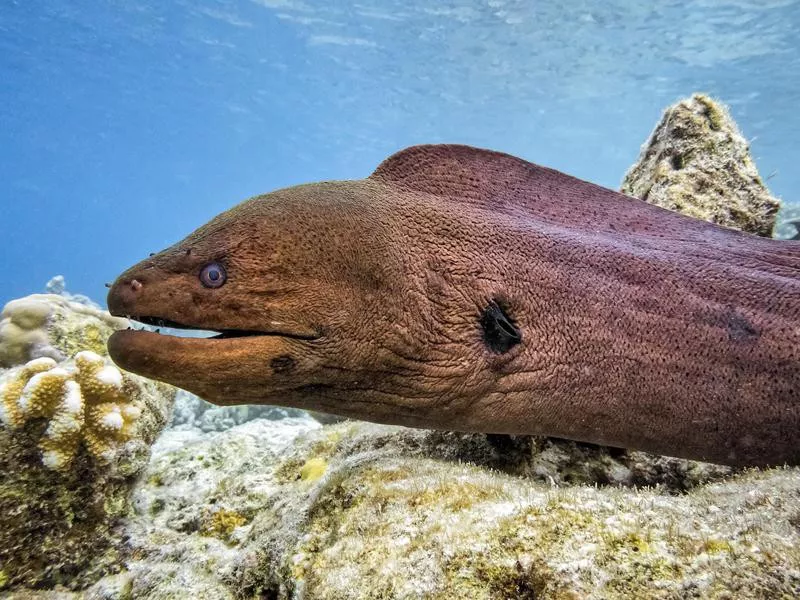
cinoby / Getty Images
Humans Killed Per Year: 0
Where They Can Be Found: Warm waters of the Atlantic, Pacific and Indian oceans
Notable Features: Long bodies without scales
Note: Some of the animals on this list are dangerous for attacking humans, not necessarily killing them. While that information is difficult to find for each animal, we included the number of attacks or deaths per year that each individual animal caused when we could find that information.
What Makes Them So Dangerous
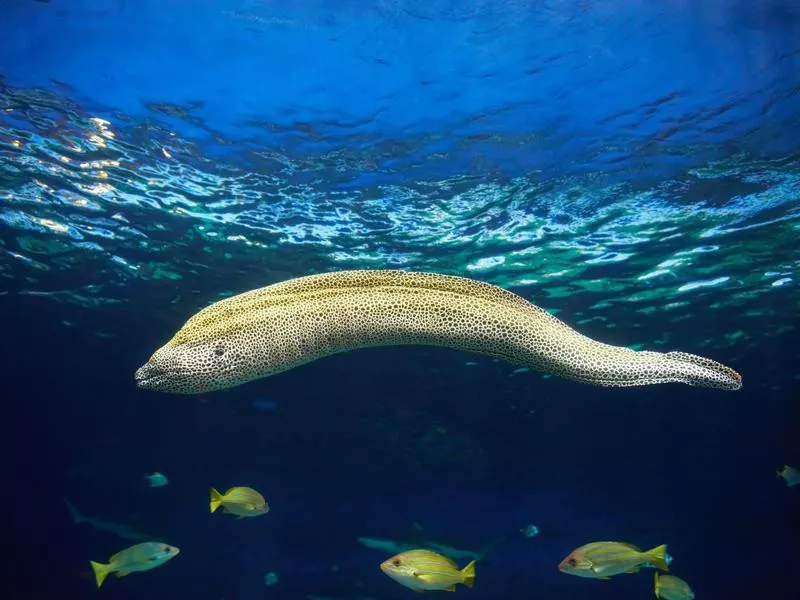
Dovapi / Getty Images
The moray eel tends to hang out in tropical seas. They have thick, scaleless skin and sharp teeth that enable them to inflict serious wounds on their prey, including humans, when disturbed. People eat Moray eels in some areas of the world, but their flesh can be toxic and cause illness or death if not prepared properly.
Its cousin, the electric eel, discharges 300 to 650 volts when it feels threatened. Human deaths by both eels are extremely rare but can happen.
34. Golden Poison Frog
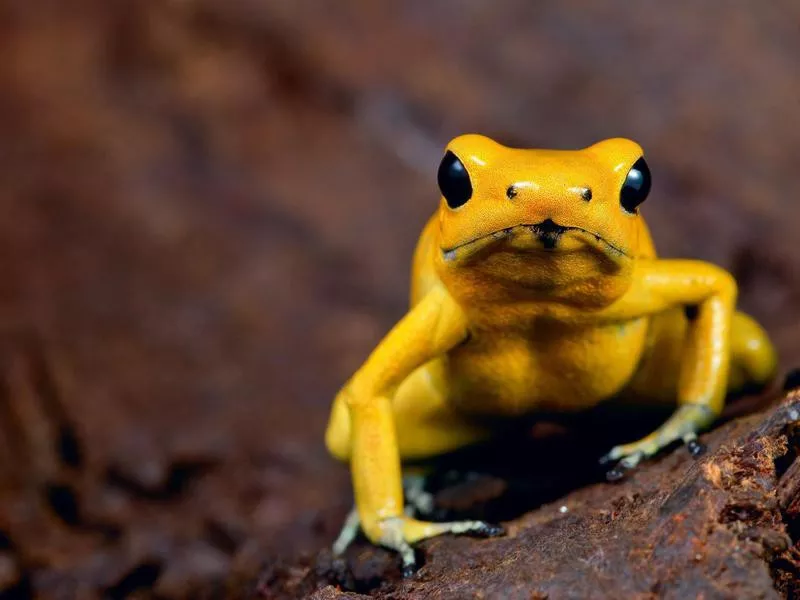
kikkerdirk / Getty Images
Humans Killed Per Year: Unclear
Where They Can Be Found: Colombia
Notable Features: Bright yellow coloring
What Makes Them So Dangerous
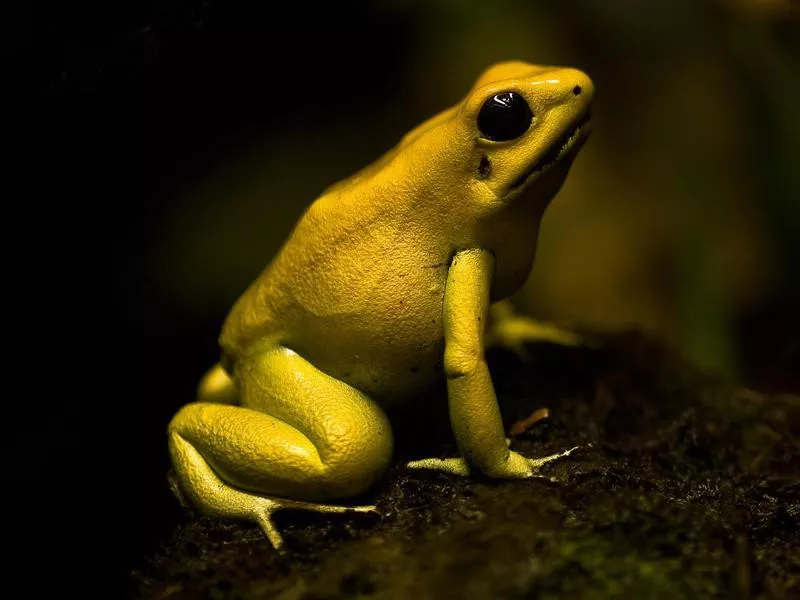
zmeel / Getty Images
The golden poison frog is considered one of the most toxic animals on Earth. To put it in perspective, it packs enough venom to kill 10 adults. It’s unclear how many humans have died from an encounter with a poison dart frog. But its venomous characteristics make it one of the world’s deadliest animals.
It gets its name from the indigenous people of Colombia who tipped their darts and blowguns with its venom before hunting. For an animal to be considered poisonous, it must be toxic to eat. The golden poison frog keeps its toxins in glands beneath its skin, so any human or animal that takes a bite would be in serious trouble.
33. Stonefish
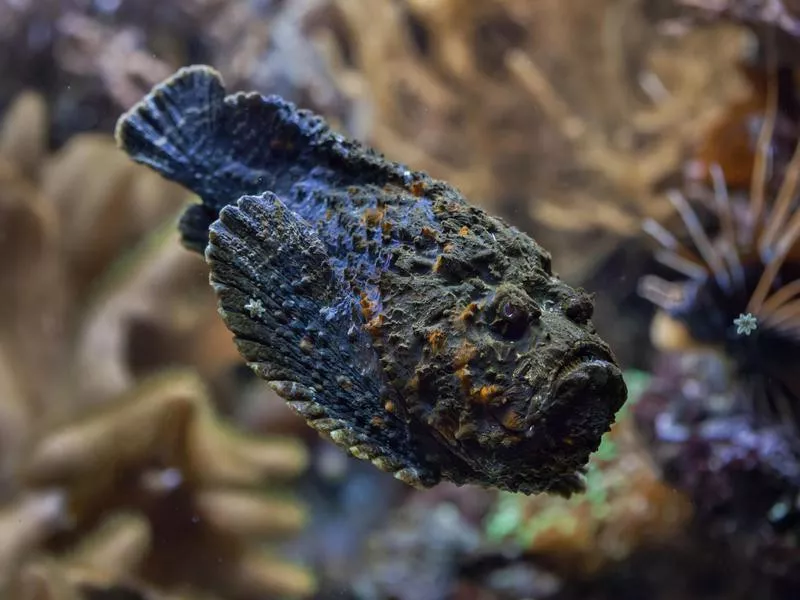
wrangel / Getty Images
Humans Killed Per Year: 0
Where They Can Be Found: Coastal waters of Australia, Indonesia and India as well as a few species in the Caribbean and Florida Keys
Notable Features: Have similar looks to a rock or part of a reef
What Makes Them So Dangerous
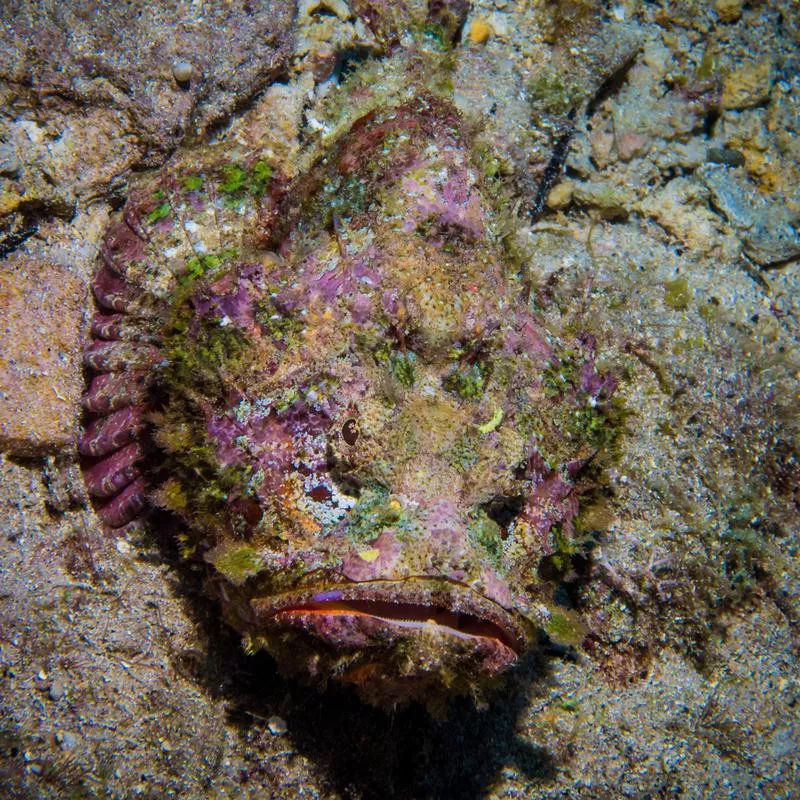
Veloc_Huang / Getty Images
Stonefish are the world’s most venomous fish. They fool their prey (humans included) by camouflage as they blend in with reefs and the bottom of the ocean floor. They have 13 spines along their back, and each spine has a gland that holds venom.
If a person steps on or kicks a stonefish, the venom is released, and the person (or other aquatic enemies) is up for a painful and sometimes fatal ride. Stonefish are particularly dangerous to divers and swimmers in Australia. These days, there is a stonefish anti-venom, so there haven’t been many deaths per se by stonefish in recent years.
32. Blue-Ringed Octopus
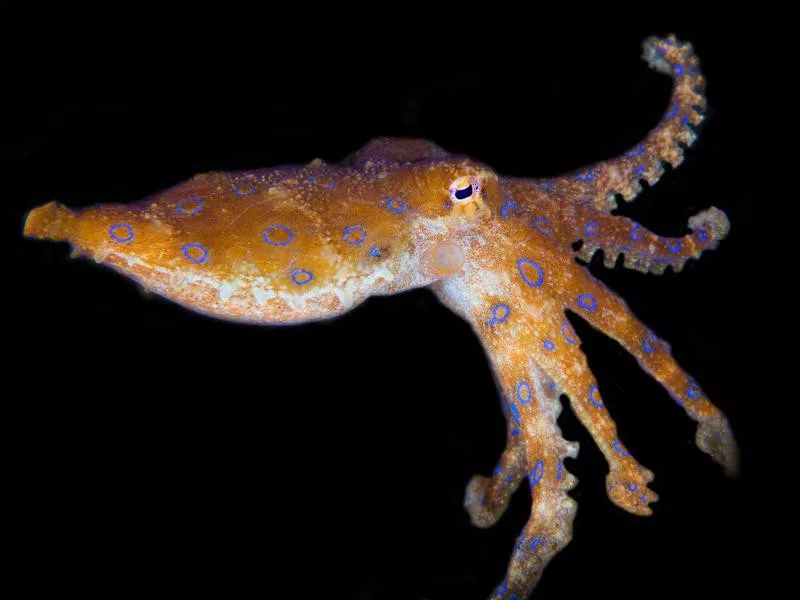
Howard Chen / Getty Images
Humans Killed: 3 people (in total that have ever been recorded)
Where They Can Be Found: Australia, Japan, Philippines and India
Notable Features: Blue rings on its body
What Makes Them So Dangerous
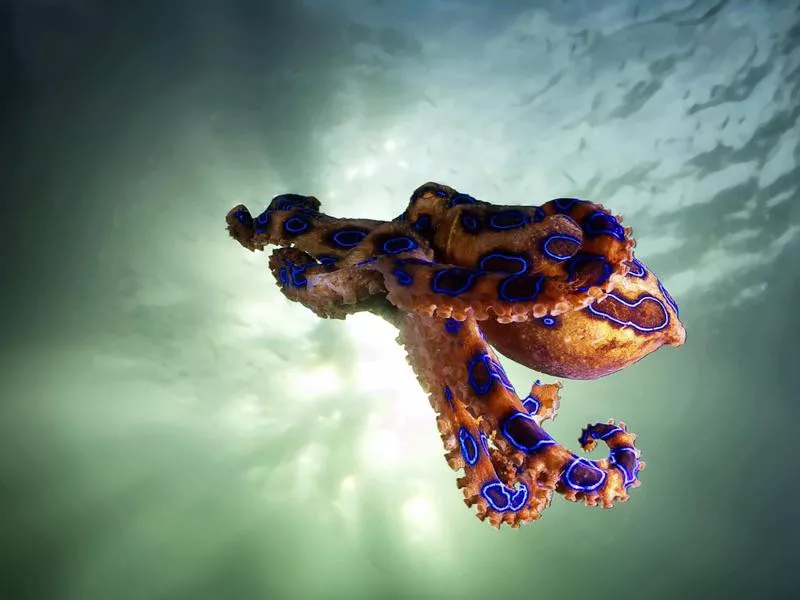
Subaqueosshutterbug / Getty Images
While most octopus squirt ink as their line of defense, the blue-ringed octopus dispenses a deadly poison — enough to kill 26 humans within minutes. Despite its power, this marine creature is only the size of a pencil and can be spotted by the noticeable blue rings on its body.
If you were to hold it in the palm of your hand (please don’t!), it would bite you and inject tetrodotoxin, a deadly toxin also found in pufferfish. It’s unlikely that you’ll encounter these killers as they tend to hide in dark crevices about 165 feet underwater.
31. Komodo Dragon
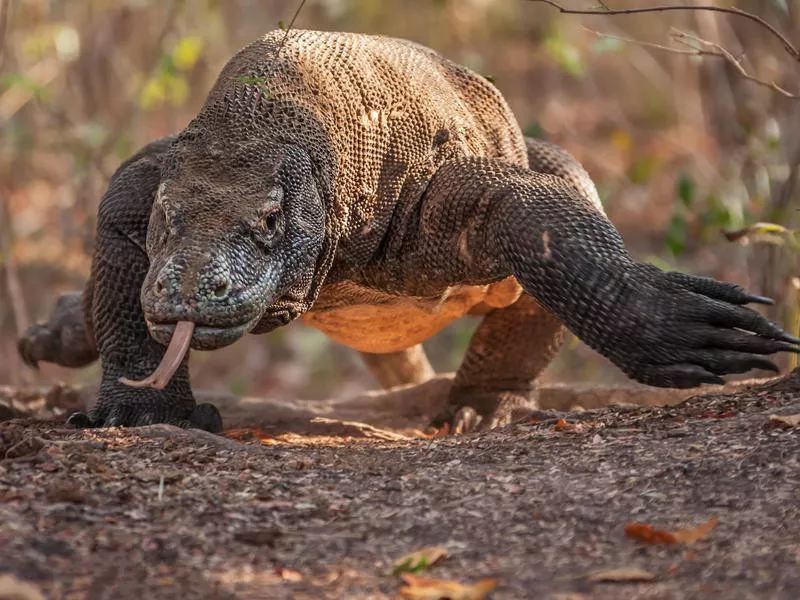
kiwisoul / Getty Images
Humans Killed: 4 people (in total that have ever been recorded)
Where They Can Be Found: Komodo Island and Lesser Sunda Islands of Indonesia
Notable Features: Shark-like teeth, clawed feet, 10 feet in length
What Makes Them So Dangerous
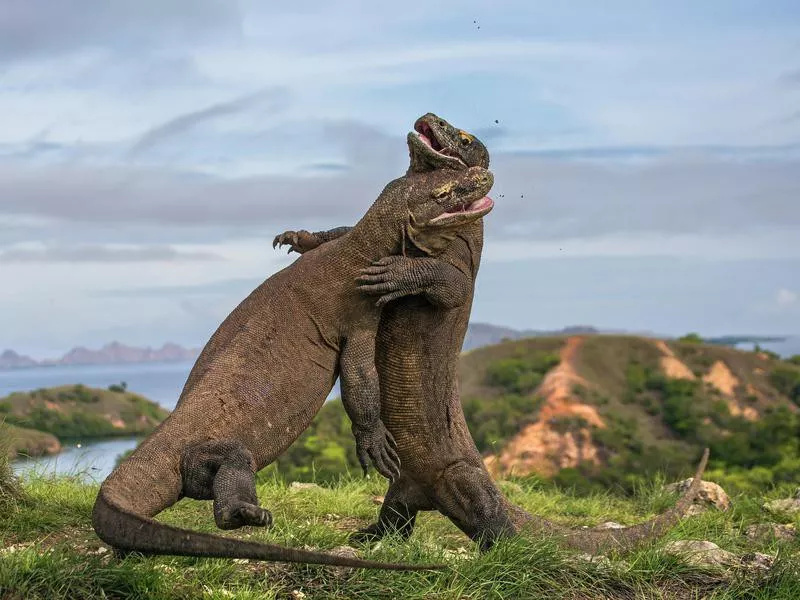
ANDREYGUDKOV / Getty Images
Komodo dragons are the world’s largest lizards, growing 10-feet long and weighing about 150 pounds. In recent years, komodo dragons have become somewhat of a tourist attraction in Indonesia. Komodo National Park invites tourists to see this large lizard in its natural habitat. But these prehistoric monsters look as vicious as they are — komodo dragons have killed four people over the past 33 years. The last fatal attack occurred in 2009.
Komodo dragons have a powerful bite packed with venom that delivers toxins that inhibit blood clotting. Trauma from the bite, bacteria from the komodo dragon’s mouth and rapid blood loss contribute to their ability to kill prey (humans included).
30. Cone Snail
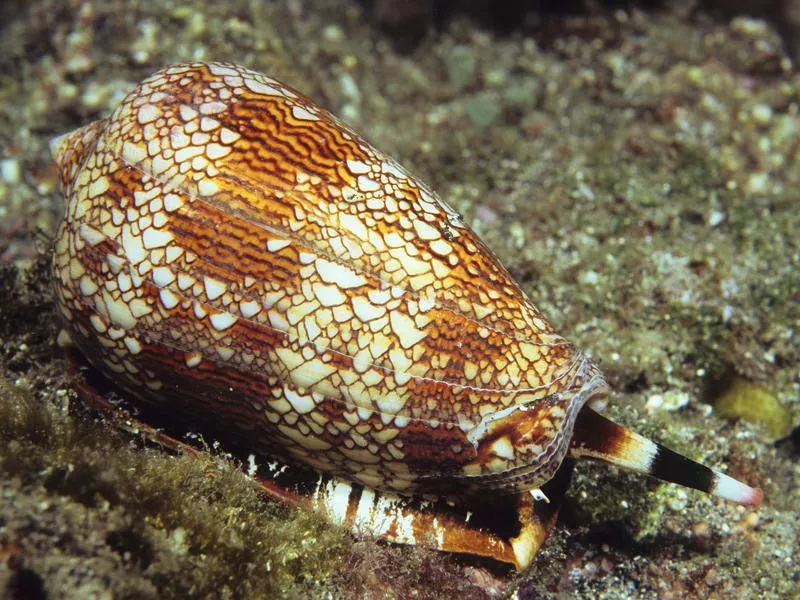
Tammy616 / Getty Images
Humans Killed: About 36 people (in total that have every been recorded)
Where They Can Be Found: Tropical, warm waters
Notable Features: A cone-shaped shell with blotchy orange coloring
What Makes Them So Dangerous
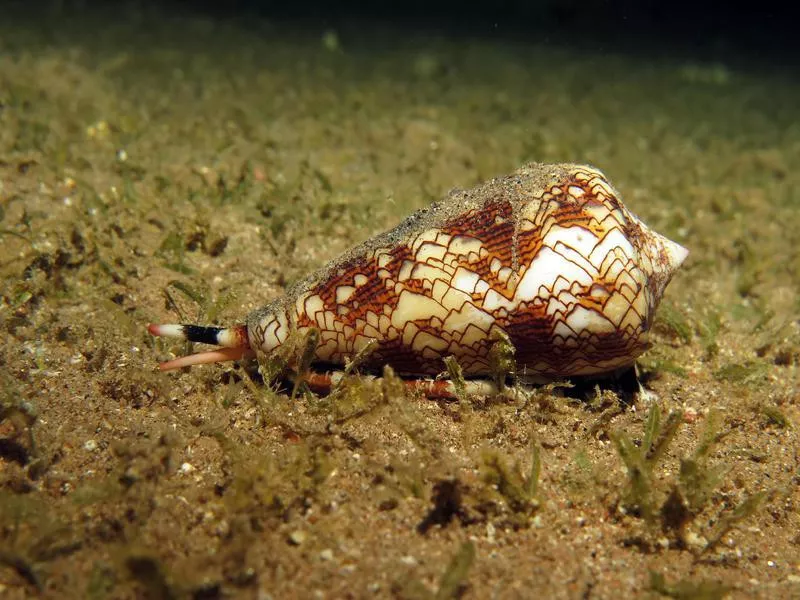
LauraDin / Getty Images
The cone snail may look harmless, but it is a deadly marine mollusk to humans and fish. It has a fatal venom that’s not intended to harm humans, but when it does, it starts with paralysis, then induces a coma and eventually leads to death.
Deep-sea divers know of the hazards of an innocent-looking cone snail, as their habitats are the tropical and colorful waters of the Red Sea, Caribbean Sea and the Indian Ocean. The cone snail has killed about 36 people over the years.
29. Alligator
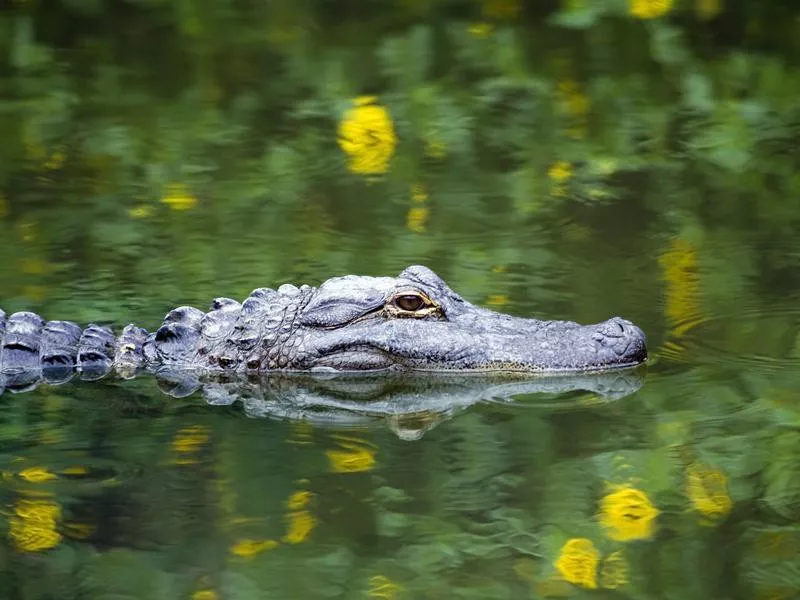
Mark Kostich / Getty Images
Humans Killed Per Year: 0-1
Where They Can Be Found: Florida
Notable Features: A long body with thick scales and bony plates
What Makes Them So Dangerous
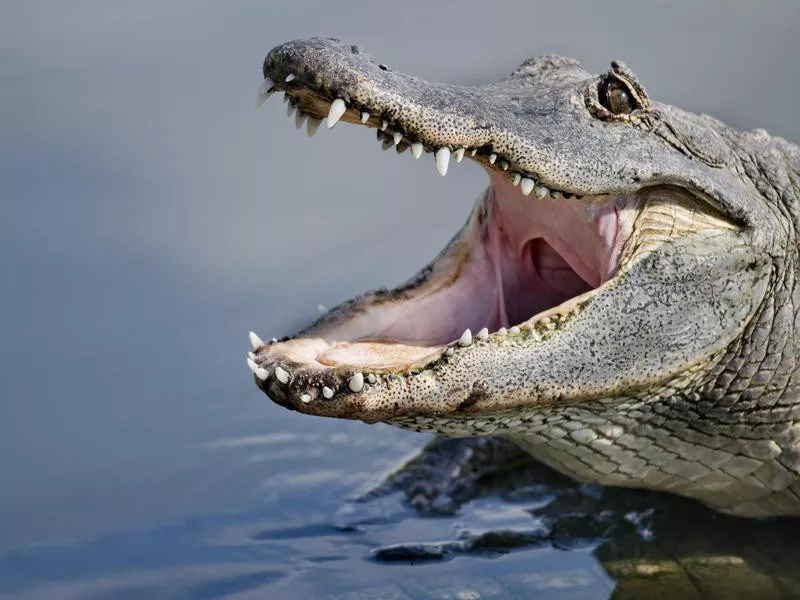
mphillips007 / Getty Images
Alligators look feisty, yes, but they don’t kill as many humans as you may think. While Florida averages about seven unprovoked alligator attacks per year, there have been only 25 fatal alligator attacks since 1948, according to the Florida Fish and Wildlife Commission.
If you see an alligator, don’t feed it. Not only is it illegal, but it teaches them to associate people with food. We don’t want that!
28. Hyena
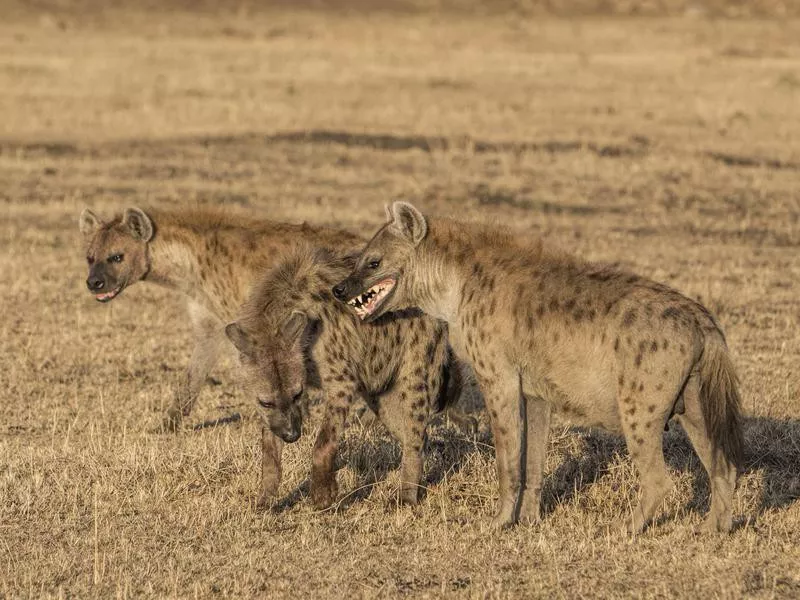
brittak / Getty Images
Humans Killed Per Year: 0-2
Where They Can Be Found: Africa
Notable Features: High-pitched laugh
What Makes Them So Dangerous
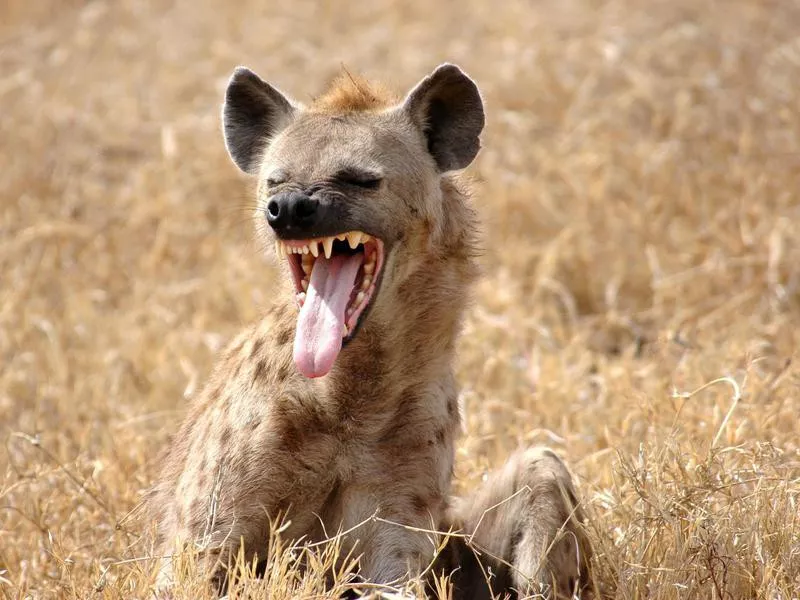
rkraan / Getty Images
No one wants to encounter a hyena, and they generally avoid humans. But in certain parts of Africa, hyenas have been known to attack villages.
Hyenas are scavengers known for their high-pitched laugh and dog-like features. They’re vicious mammals that invoke a mixture of fear and aversion in some folks (likely thanks to “The Lion King”).
27. Bear

KenCanning / Getty Images
Humans Killed Per Year: About 1-3
Where They Can Be Found: Every continent except Australia
Notable Features: Extra-large, furry animals that walk on all fours
What Makes Them So Dangerous
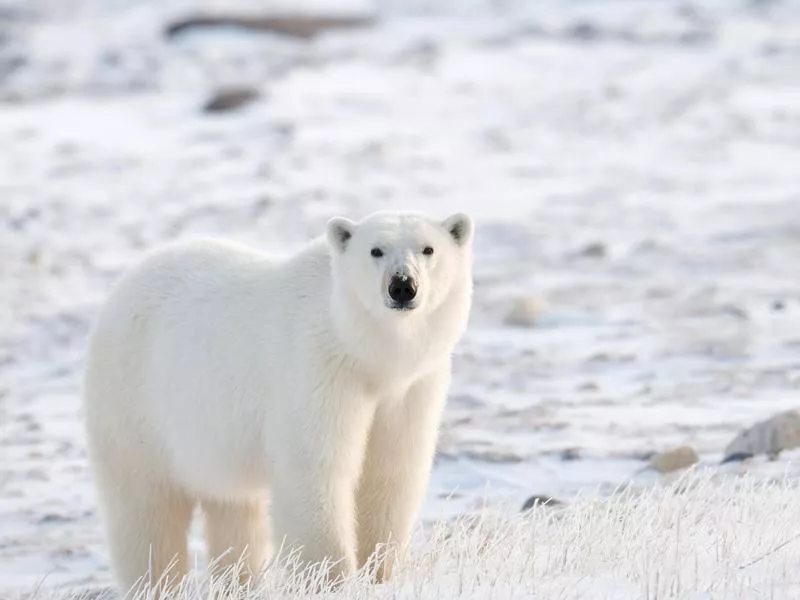
HuntedDuck / Getty Images
Bears are not as scary as they may seem. OK, they are scary-ish (come on, they’re kinda cute), but not as deadly as other animals. In fact, many are skittish and have been compared to giant squirrels.
The polar bear is one of the more aggressive bear species, while the black bear and grizzly bear take the crown for most human attacks. Bears get a terrible rep for attacking humans in forests or national parks, which is understandable because we are intruding on their natural habitat. It’s important to keep in mind that bears are surprisingly fast and very curious.
26. Pufferfish
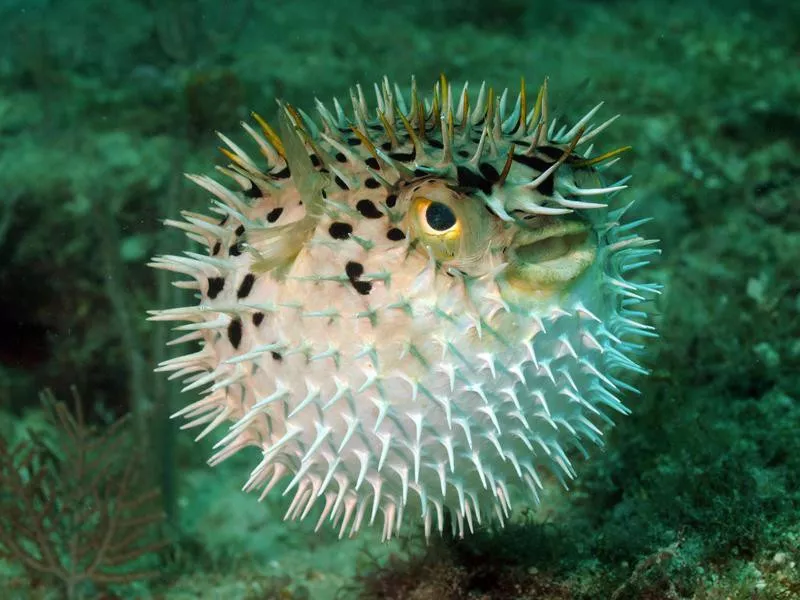
FtLaudGirl / Getty Images
Humans Killed Per Year: 2-3 (although this number is decreasing due to increased regulations on eating pufferfish)
Where They Can Be Found: Warm waters of the Indian, Pacific and the Atlantic oceans
Notable Features: A body that inflates with spikes when agitated
What Makes Them So Dangerous
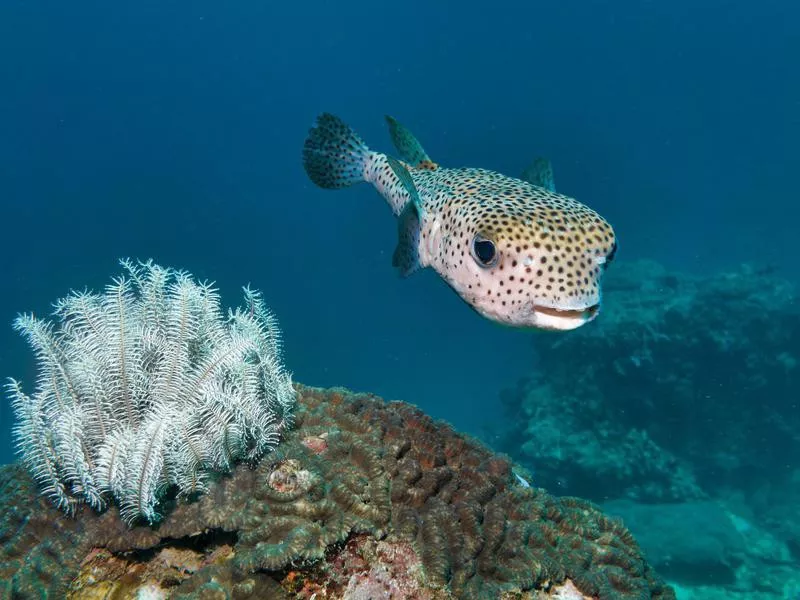
Placebo365 / Getty Images
Pufferfish, blowfish and fugu fall under the same category of a fish that puffs up with spikes and stings you. But let’s talk about fugu, a particular kind of pufferfish in Japan that contains a toxin more poisonous than cyanide!
But in Japan, pufferfish is a delicacy to eat. Most human deaths by pufferfish are due to the fact that its meat was not prepared properly. According to the Japanese Health Ministry, incorrectly prepared fugu is one of the most frequent causes of food poisoning in the country.
25. Spider
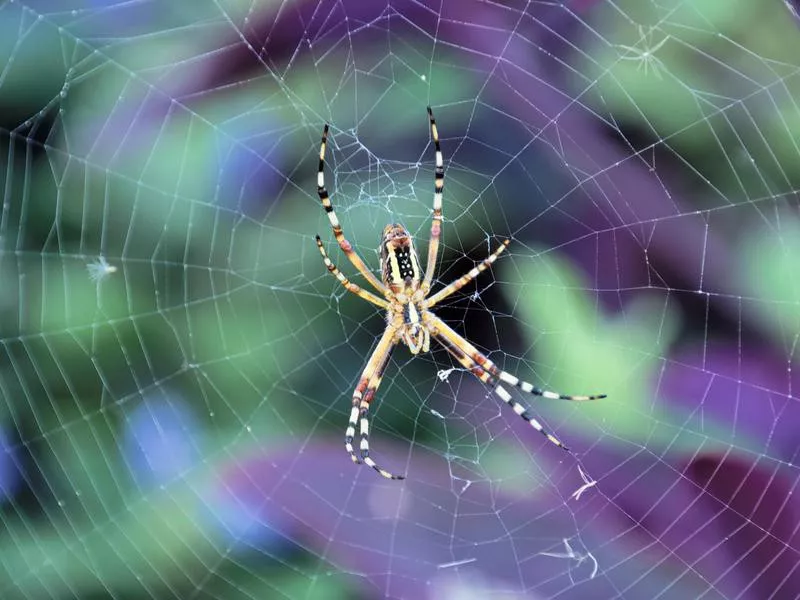
VDCM image / Getty Images
Humans Killed Per Year: About 6 (in the U.S.)
Where They Can Be Found: Worldwide
Notable Features: 8 legs
What Makes Them So Dangerous
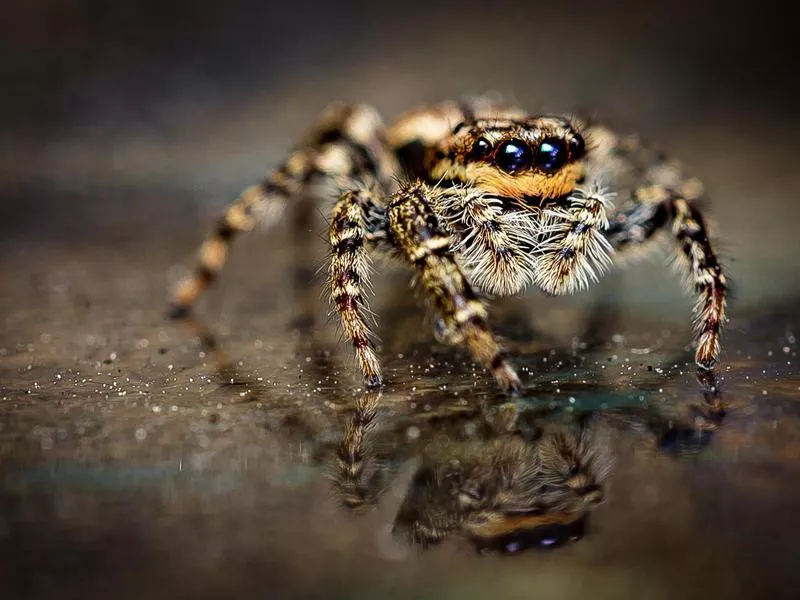
Peter Vahlersvik / Getty Images
Snakes and spiders seem to compete for fear in humans. Both have species that bite and inject a deadly venom. And both are silent killers.
There are more than 43,000 species of spiders around the world, but less than 30 species are known to kill humans. Spider venom is typically only lethal against small animals, not humans. And when it does kill a human, it’s usually the result of an allergic reaction. There are about six spider deaths each year in the United States.
24. Shark
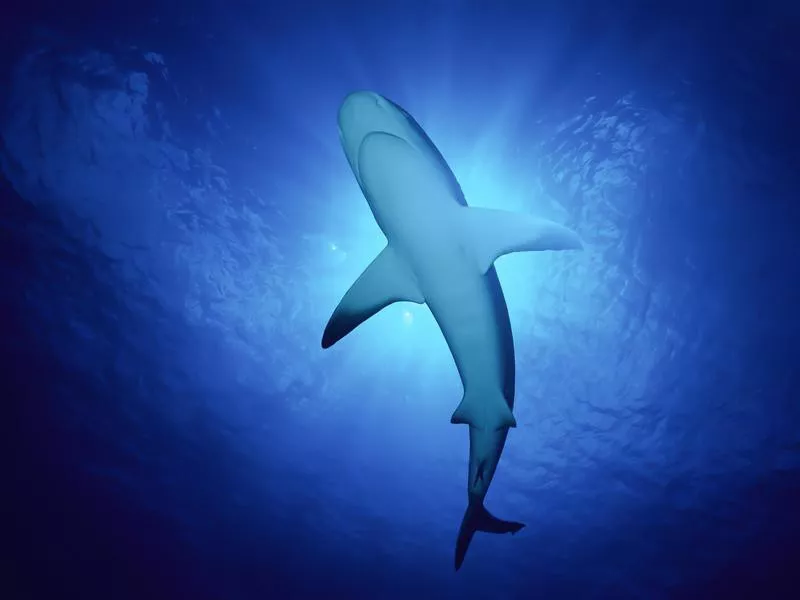
Global_Pics / Getty Images
Humans Killed Per Year: 6
Where They Can Be Found: Every ocean on the planet
Notable Features: Sharp teeth and a tall dorsal fin
What Makes Them So Dangerous
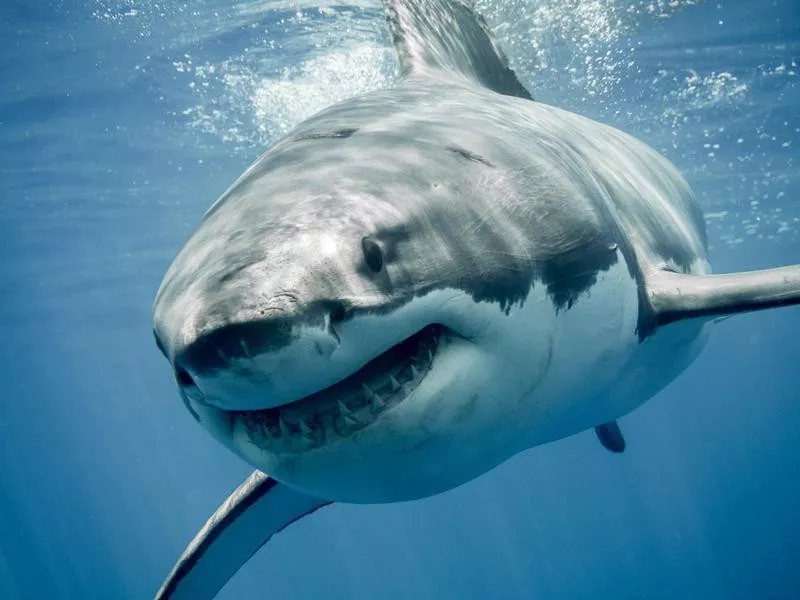
RamonCarretero / Getty Images
Shocked that sharks are only at No. 24 on this list? While “Jaws” instilled an understandable fear of sharks in humans, fatal shark attacks are pretty rare. In fact, sharks aren't even the most dangerous ocean animal.
Only about 12 species are considered dangerous to humans. Great white sharks are the deadliest of all the sharks in the ocean, with 300 sharp teeth that can rip right through you.
23. Wolf
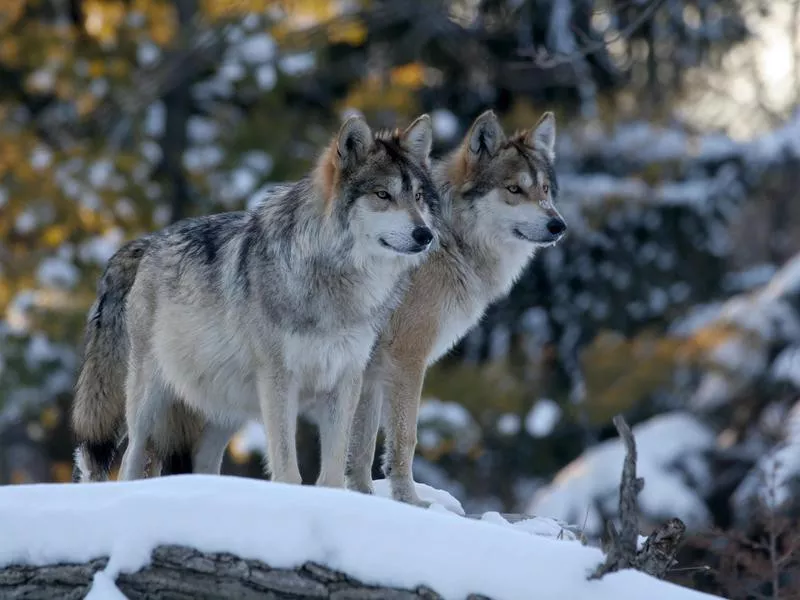
stevegeer / Getty Images
Humans Killed Per Year: 10
Where They Can Be Found: North America, Europe, Asia and North Africa
Notable Features: Resembles a dog, minus the puppy-dog eyes
What Makes Them So Dangerous
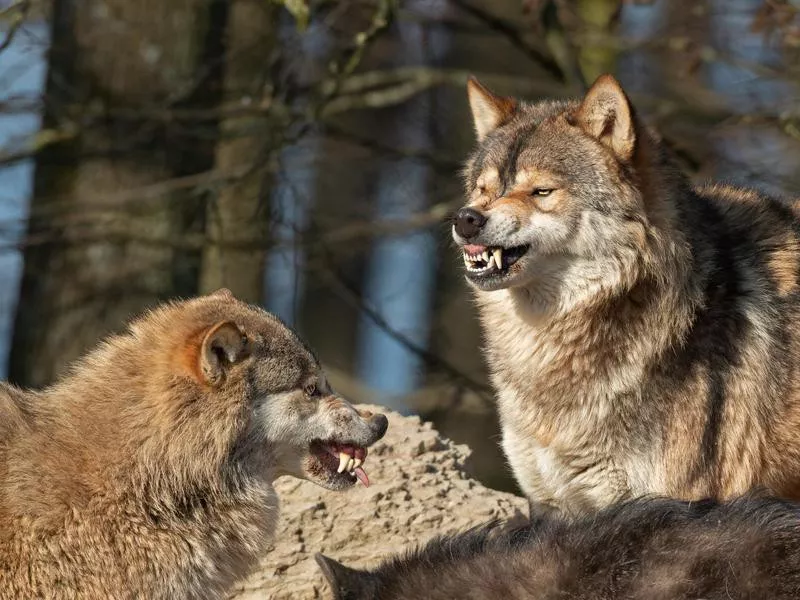
Andyworks / Getty Images
The strength of the wolf lies in the pack. These cliquey animals are ferocious, fast and territorial. They’re most common in the woods of North America.
It’s unlikely that you will actually ever confront a wolf, as they don’t usually roam on walking trails. In fact, they’re scared of humans!
22. Horse
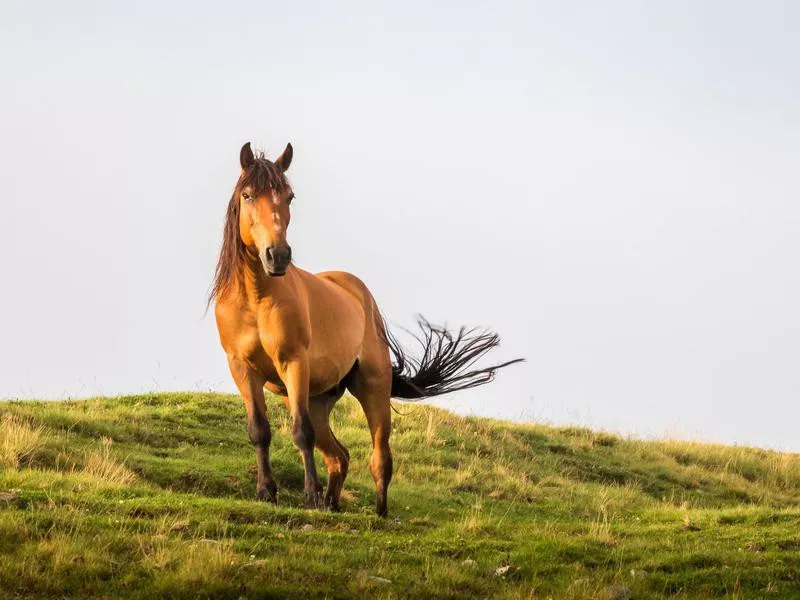
Dan Badiu / Getty Images
Humans Killed Per Year: 20
Where They Can Be Found: Worldwide
Notable Features: A long mane of hair on top of the neck
What Makes Them So Dangerous
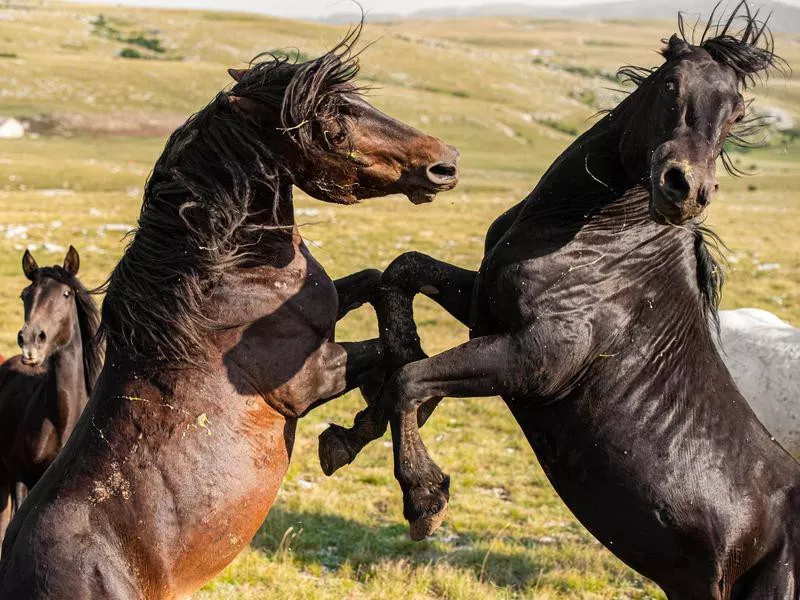
ti-ja / Getty Images
People love riding horses, but unfortunately, there are about 20 horse-related deaths each year.
It’s usually from people falling off the massive animal. Horses and cows killed about 77 people from 2008 to 2017 in Australia alone.
21. Cow
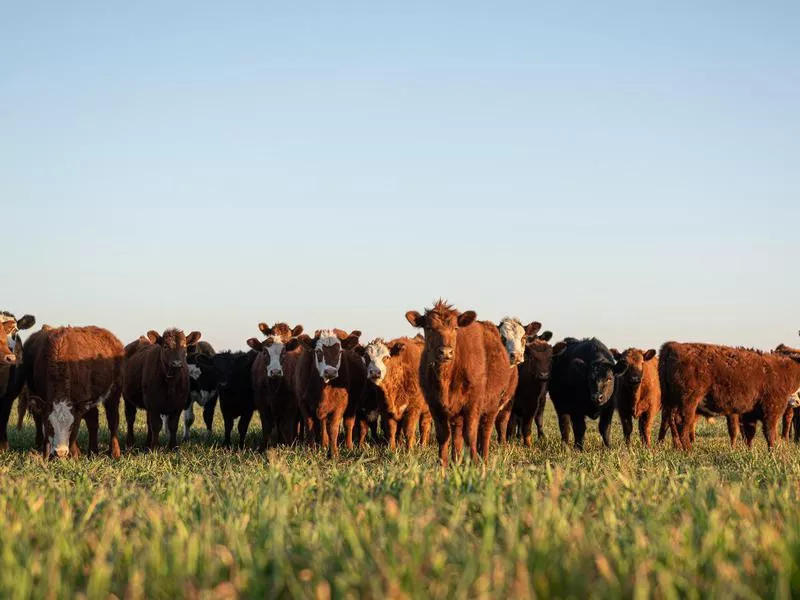
nickalbi / Getty Images
Humans Killed Per Year: 22
Where They Can Be Found: Worldwide
Notable Features: Black and white coloring
What Makes Them So Dangerous
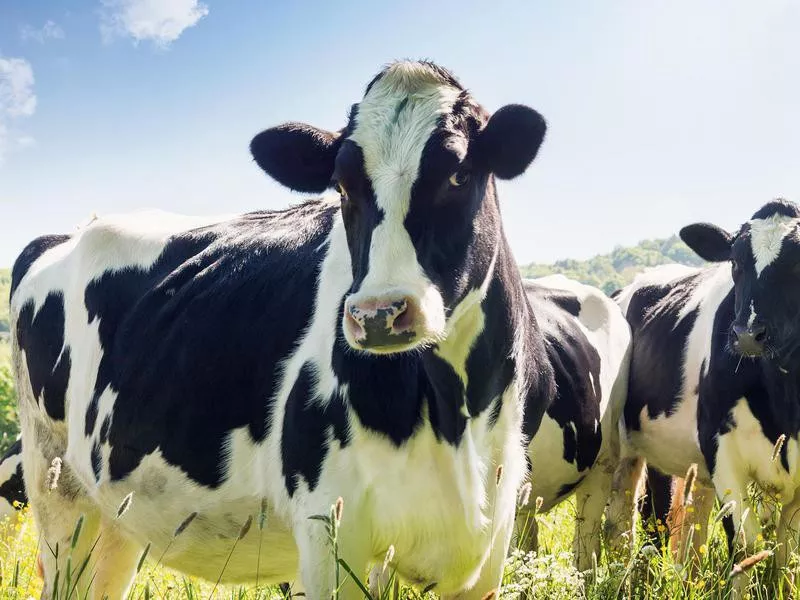
kamisoka / Getty Images
Cows kill more people than sharks. There. We said it.
Cows kill about 22 people each year by kicking or trampling, which makes sense for those who have ever worked with cows on a cattle farm.
20. Ant
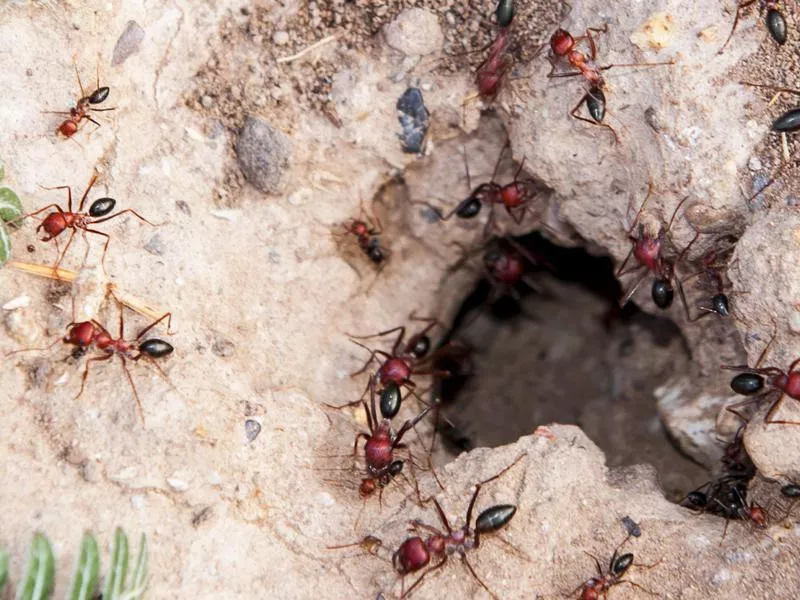
SanerG / Getty Images
Humans Killed Per Year: About 20-50
Where They Can Be Found: Around the world but most commonly found in the southeastern United States
Notable Features: Fire ants are usually a light brownish-red, but their aggressiveness is their most striking difference to regular ants.
What Makes Them So Dangerous
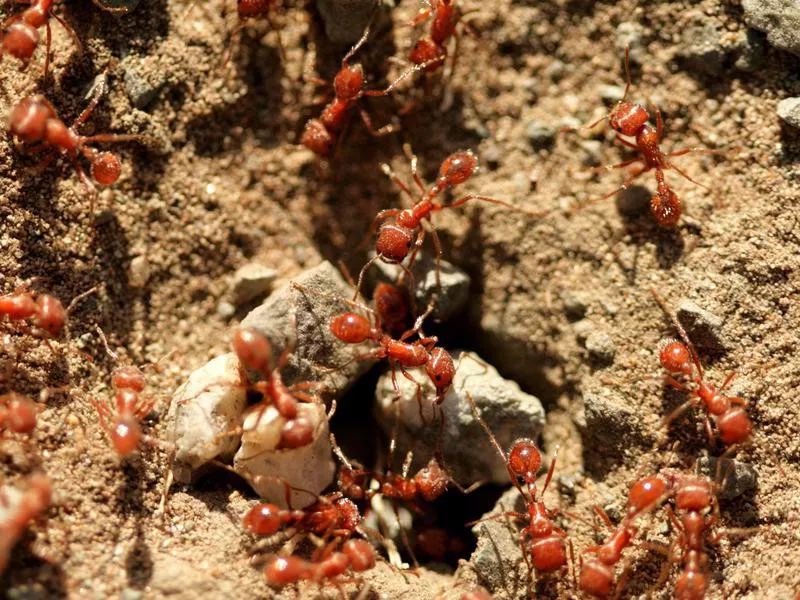
Cabezonication / Getty Images
Don’t underestimate ants. There are about 12,000 species, and they all come with personality. There are 280 fire ant species around the world, and a sting from one of these killers may cause fatal anaphylaxis to people who have an allergic reaction. But most people won’t react that way.
A fire ant bite is noticeable as it starts to itch immediately and then turns into a red welt.
19. Hornet
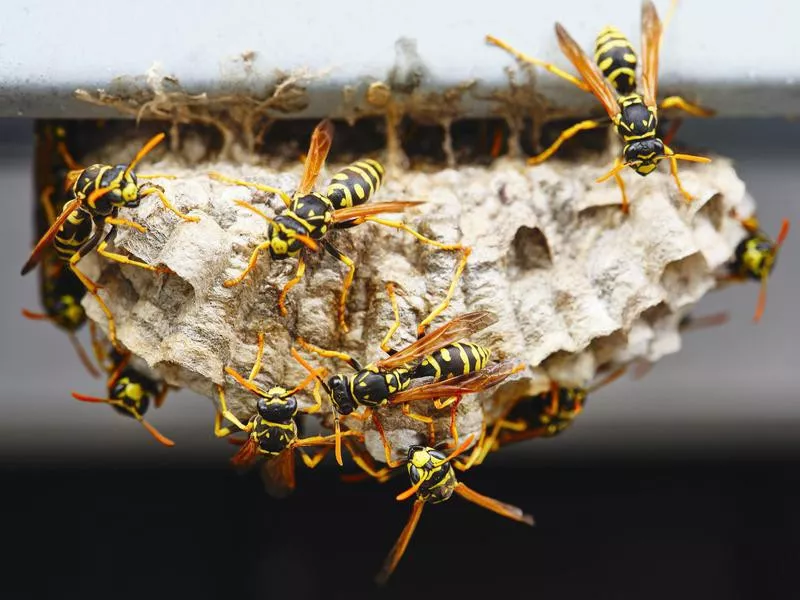
RichLegg / Getty Images
Humans Killed Per Year: About 30-50
Where They Can Be Found: Europe, Africa and North America, but the giant hornet is in Asia
Notable Features: The Asian giant hornet is about 1.5 inches in length.
What Makes Them So Dangerous
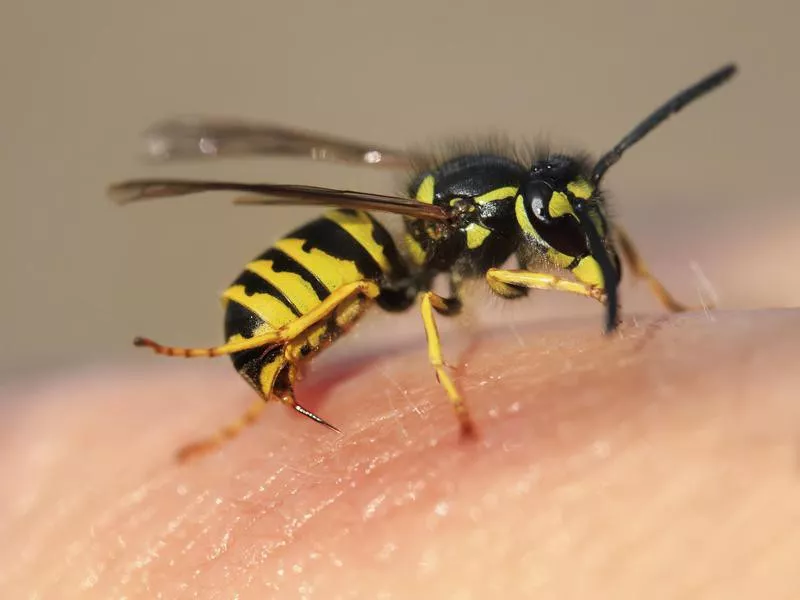
Nataba / Getty Images
Deaths from a hornet sting are usually grouped with wasp and bee stings. But in China and Japan, something called an Asian giant hornet is a killer. As its name implies, giant hornets are, well, giant. They’re roughly the size of a human thumb and usually invade schools or farm workers.
There are an estimated 30 to 50 deaths each year in Japan from hornet attacks. Most deaths are due to an allergic reaction to the sting.
18. Tiger

Antagain / Getty Images
Humans Killed Per Year: About 40-50
Where They Can Be Found: Asia
Notable Features: Orange and black stripes
What Makes Them So Dangerous

Antagain / Getty Images
If we learned anything from “Tiger King,” it’s that there are about 3,900 tigers left in the wild. (There are more than 5,000 tigers in captivity within the United States!)
Most of the wild tigers live in India. Tiger attacks are rare as they don’t deliberately kill humans. Yet they kill about 40 to 50 people each year. Tiger attacks are a problem in India as a large population impedes on their natural habitat.
17. Jellyfish
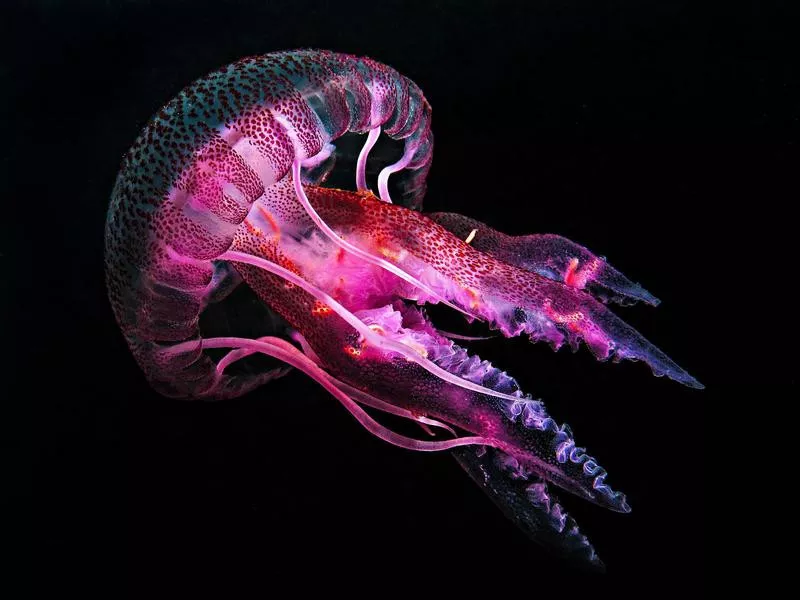
IvanaOK / Getty Images
Humans Killed Per Year: 40+
Where They Can Be Found: Every ocean
Notable Features: Long tentacles
What Makes Them So Dangerous
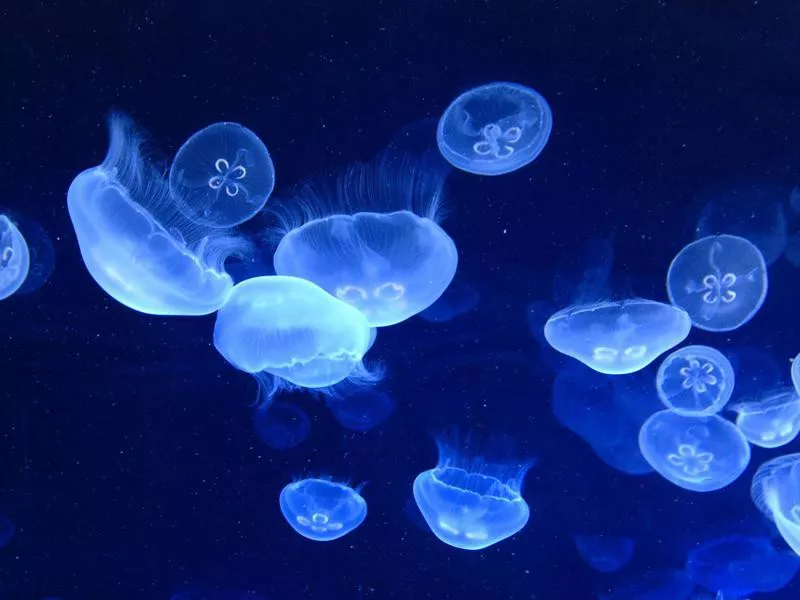
jacquesvandinteren / Getty Images
Jellyfish may not have brains, but they can kill. There are about 2,000 different types of jellyfish, about 70 of which can hurt you. For instance, the box jellyfish is a vicious killer lurking in tropical seas. It strikes with a harmful venom that causes headaches, vomiting, rapid heartbeat and pulmonary edema.
It’s estimated that the box jellyfish account for 20 to 40 deaths each year in the Philippines alone.
16. Scorpion
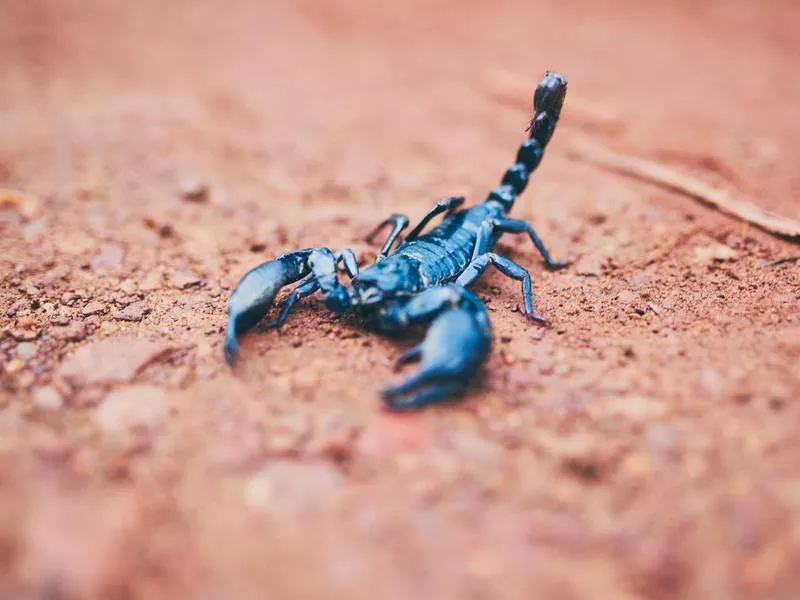
PeopleImages / Getty Images
Humans Killed Per Year: Anywhere from 10 to 1,000
Where They Can Be Found: Every continent except Antarctica
Notable Features: Two pinchers and a long tail that curls over its body
What Makes Them So Dangerous
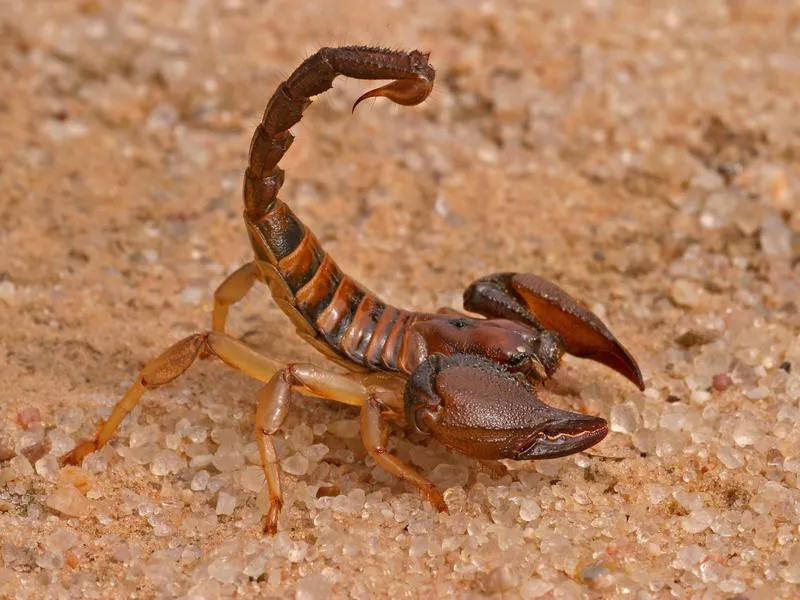
EcoPic / Getty Images
You don’t need to tell us to fear scorpions. The thought of their curled tails and pinchers makes us shutter. Scorpions are technically arachnids, like spiders, with eight legs and two central body regions. There are about 30 to 40 scorpion species that can kill you.
Scorpions are usually found in deserts but have been spotted in rainforests and the Himalayas. While all scorpions are dangerous, the one you need to look out for is the yellow deathstalker (um, what?). This killer is the most venomous scorpion and lives in the deserts of the Middle East. Scorpions are survivors, as they’ve been around for millions of years. We’ll give them that.
15. Bee
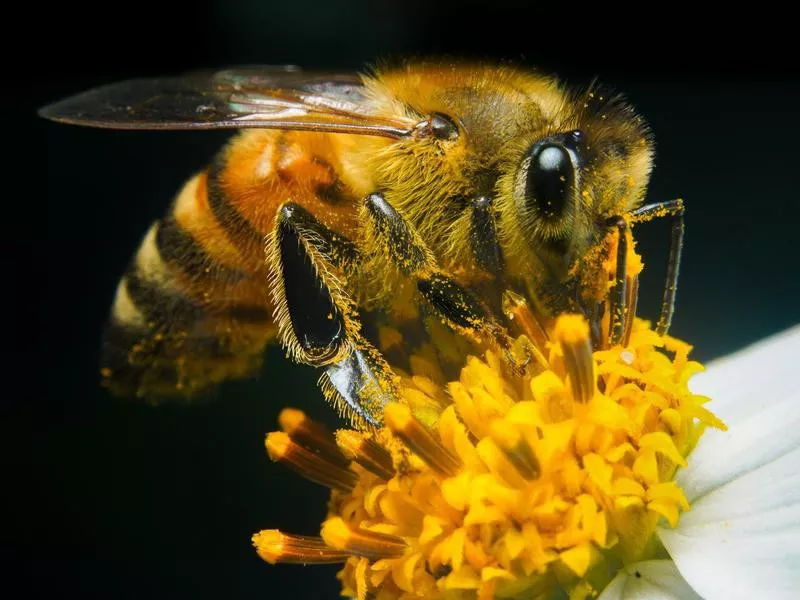
yoshiurara / Getty Images
Humans Killed Per Year: About 100
Where They Can Be Found: Worldwide
Notable Features: Black-and-yellow-striped body with a stinger in its anterior
What Makes Them So Dangerous
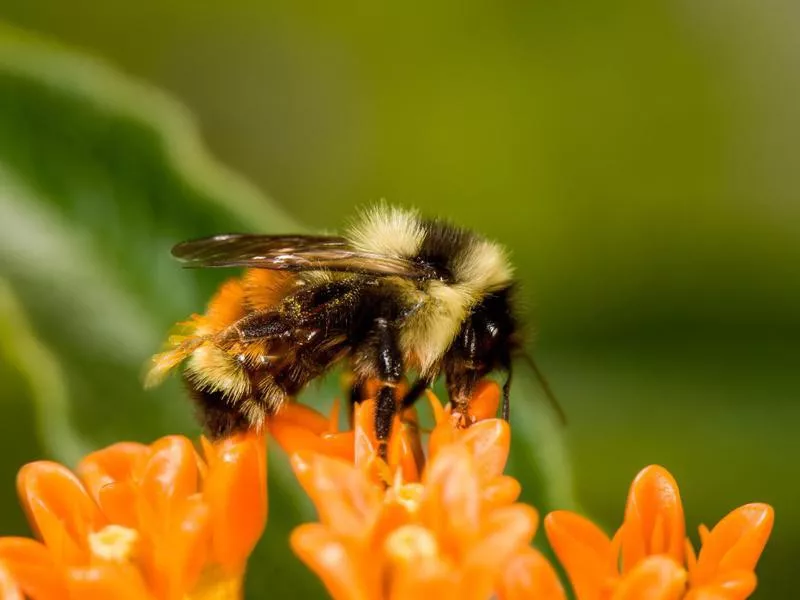
Paul Hartley / Getty Images
We often tense up when we see or hear a bee buzzing around. Rather than swat at it, let it go away on its own. Bees are responsible for killing about 100 people each year, with bee sting deaths in the U.S. rising every year.
Death is often due to an allergic reaction to the bee sting. About 80 percent of those who die of a bee, wasp or hornet sting are men, according to the CDC.
14. Deer
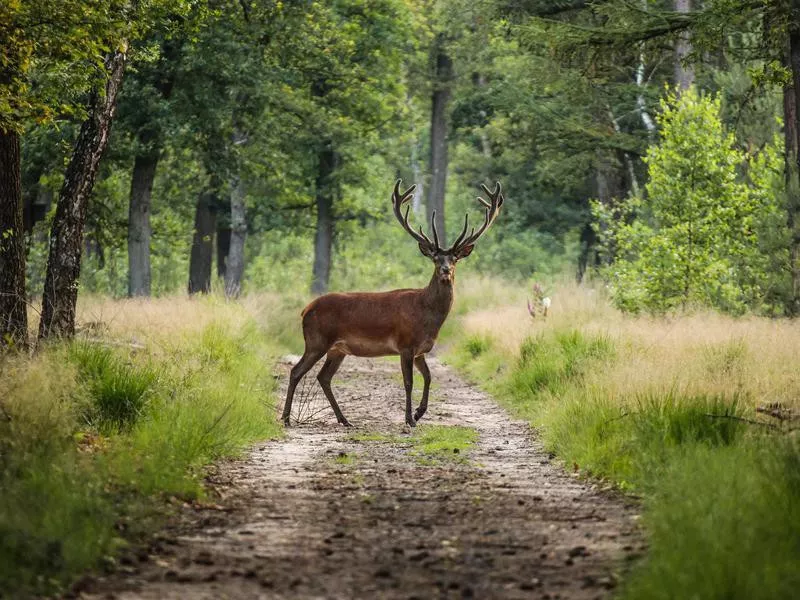
Laurens Verhoeven / Getty Images
Humans Killed Per Year: 100+
Where They Can Be Found: North America
Notable Features: Antlers
What Makes Them So Dangerous
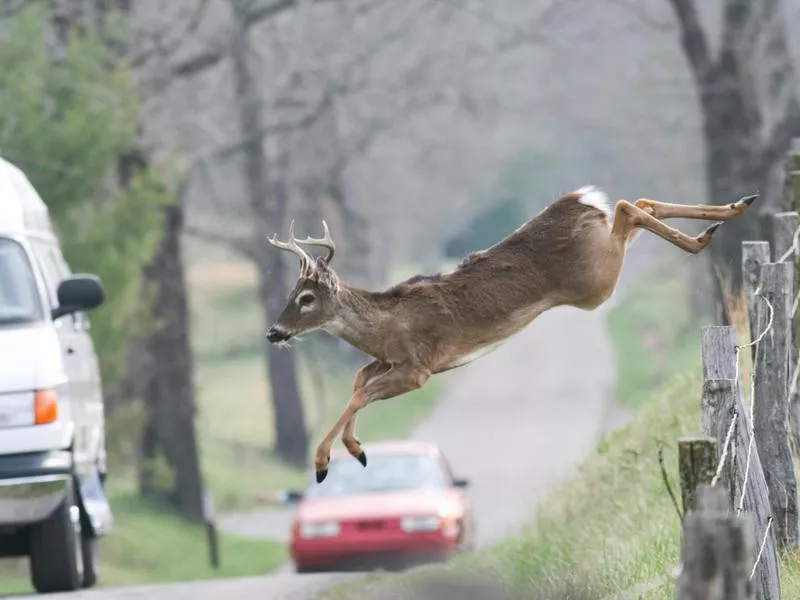
jcrader / Getty Images
Now, you may be wondering why Bambi is so dangerous. Well, he’s responsible for more than 100 human deaths per year due to car accidents. While it’s not a vicious attack, it still makes deer dangerous, especially to drivers at night.
So, why do deer freeze in the middle of the road when a car is coming at them? Photoreceptors in their retinas make them freeze when looking directly at headlights. If you’re about to hit a deer honk, don’t swerve, brake and stay in your lane.
13. African Cape Buffalo
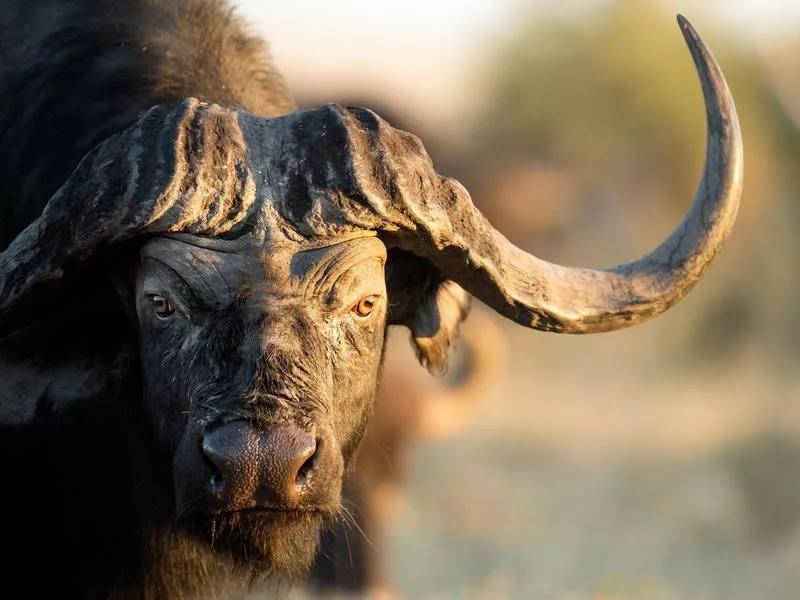
2630ben / Getty Images
Humans Killed Per Year: 200
Where They Can Be Found: Africa
Notable Features: Long thick horns
What Makes Them So Dangerous
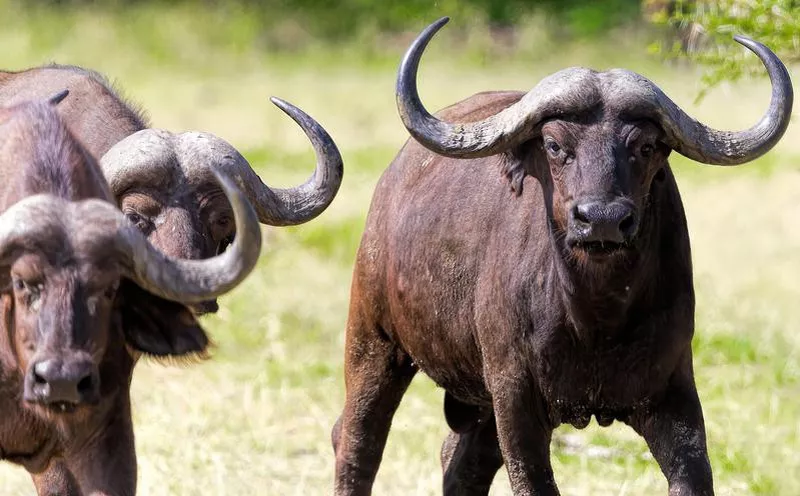
1001slide / Getty Images
The African Cape Buffalo may have horns that look like an 18th-century British wig, but that’s what makes them so dangerous. Because of their luxurious horns and being part of the African Big Five, they’re subject to hunters.
Cape Buffalos are called “Black Death” because they’re an aggressive animal when wounded. In the instance of being hunted, the herd turns into a mob and charges at speeds of 35 miles per hour.
12. Lion
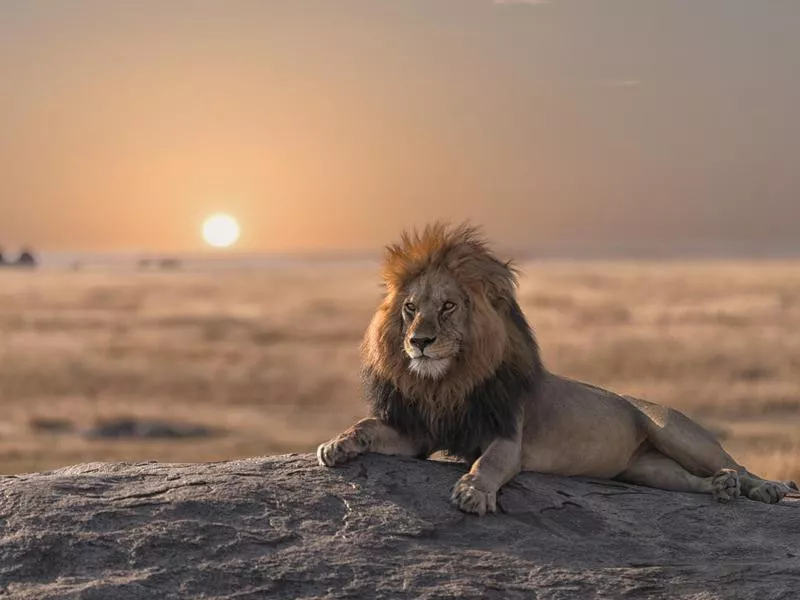
MrRuj / Getty Images
Humans Killed Per Year: About 250
Where They Can Be Found: Africa and India
Notable Features: Sharp teeth and a big mane of hair
What Makes Them So Dangerous
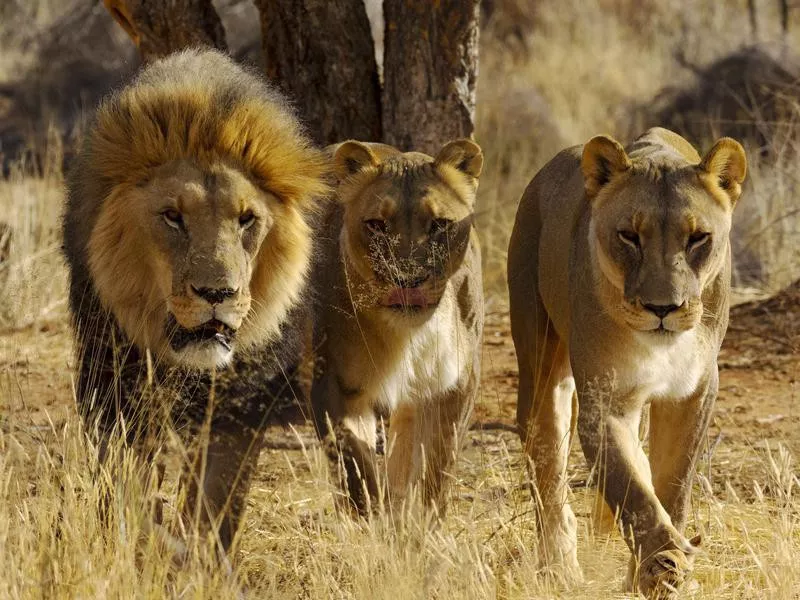
claudio.arnese / Getty Images
The king of the jungle is a lazy predator, yet they’re responsible for about 250 human deaths per year (although this number varies). Lions sleep about 20 hours each day, but if a human encounters a lion, it’s game over. The worst thing you can do is run or faint.
The lion’s biggest weapons are their speed, sharp teeth and the pack. FYI, never turn your back on a lion, or they’ll pounce.
11. Elephant
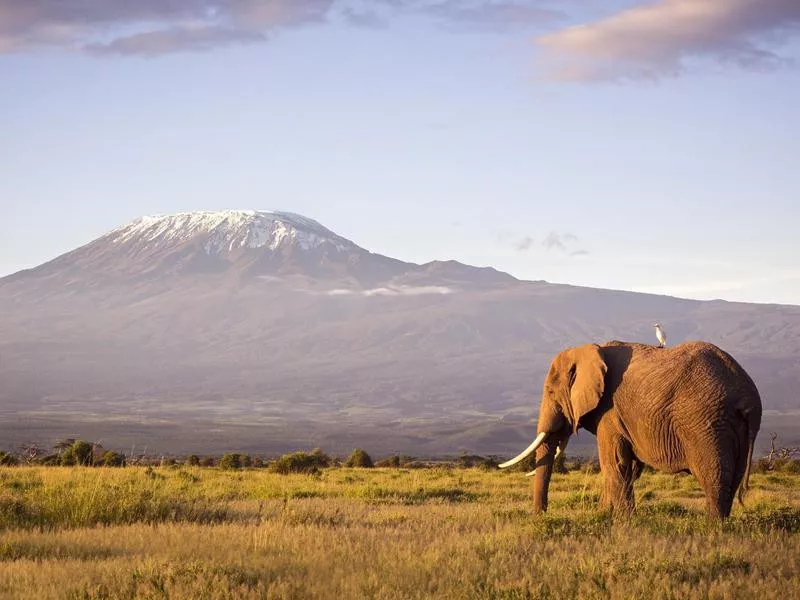
WLDavies / Getty Images
Humans Killed Per Year: 500
Where They Can Be Found: Africa and Asia
Notable Features: A long trunk, big floppy ears and is 10 feet in height
What Makes Them So Dangerous
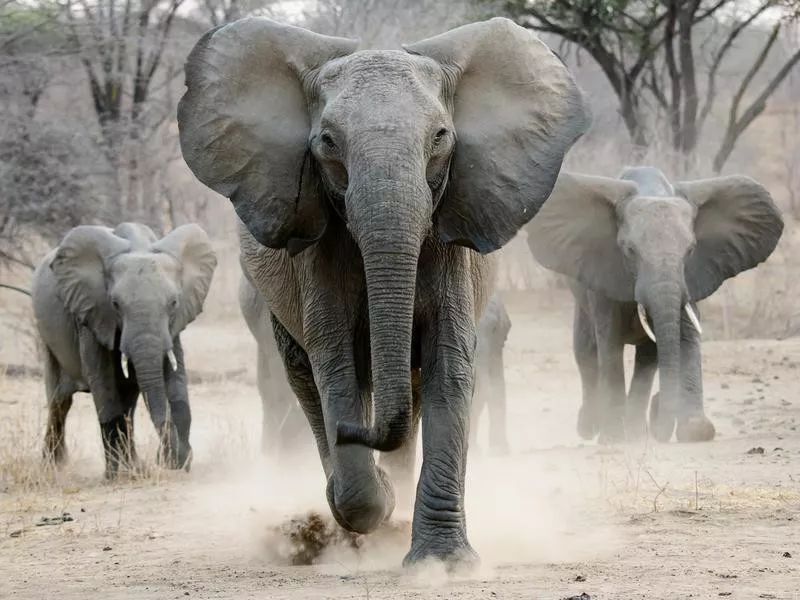
Trevorplatt / Getty Images
As with most animals, elephants attack when provoked. They’re usually gentle giants trying to enjoy green leaves and bananas while being so cute, you'll want to learn everything there is to know about them — just don’t bother these guys when they’re eating!
While elephants kill about 500 humans each year, about 100 elephants are killed each day by poachers.
10. Hippopotamus
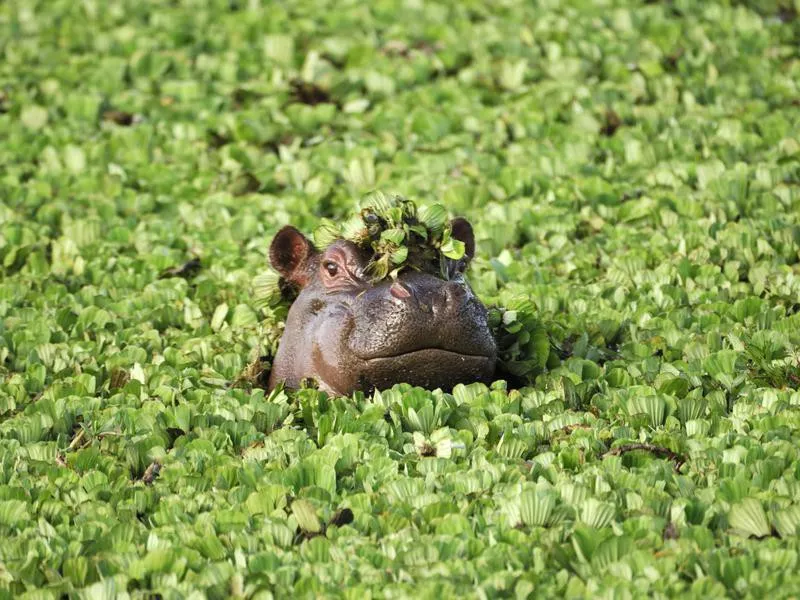
GomezDavid / Getty Images
Humans Killed Per Year: 500
Where They Can Be Found: Africa
Notable Features: Other than a large barrel body, it has a big mouth with large teeth and tusks.
What Makes Them So Dangerous
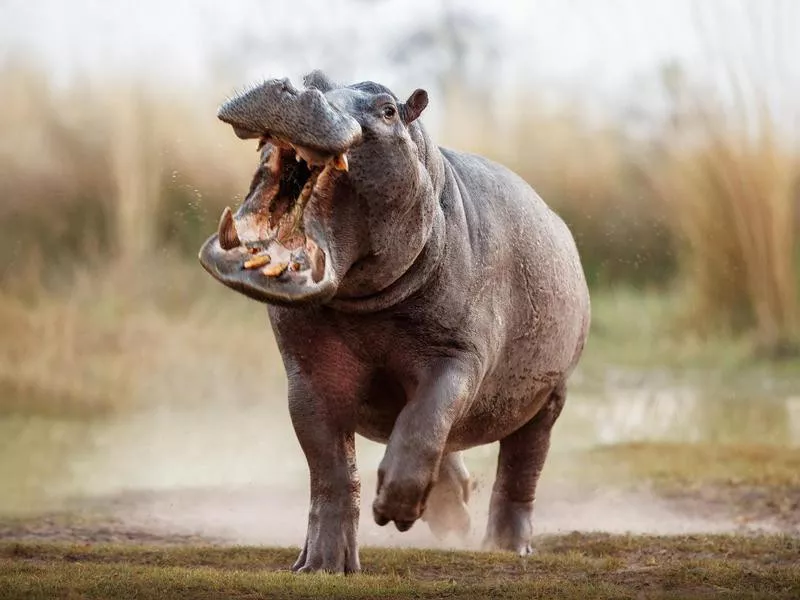
Photocech / Getty Images
Hippos are extremely aggressive and territorial animals. If threatened on land, hippos can match a human’s speed and kill them. They spend about 16 hours a day in the water and only leave the water to eat.
Hippos consume about 80 pounds of grass a day and weigh about 3,000 to 8,000 pounds!
9. Tapeworm

piola666 / Getty Images
Humans Killed Per Year: 700
Where They Can Be Found: Worldwide, although risk factors include exposure to livestock, travel to developing countries and living in endemic areas
Notable Features: You won’t see it if ingested, but the parasite is flat like a ribbon and can grow to be about 30-feet long.
What Makes Them So Dangerous
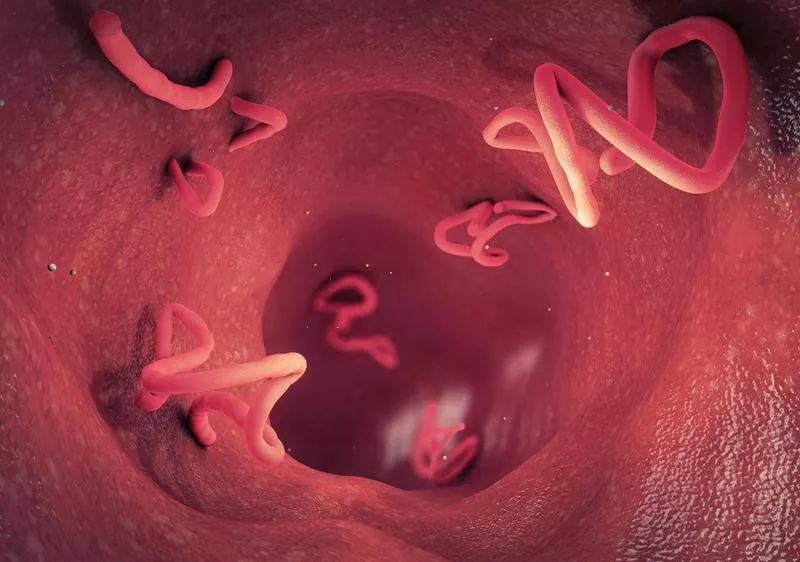
Christoph Burgstedt / Getty Images
This small but mighty parasite is one of the world’s deadliest animals because it transmits infections called cysticercosis or taeniasis. Humans get tapeworm by eating raw or undercooked beef or pork.
Tapeworms are a silent killer, as the symptoms are usually mild or nonexistent. Eventually, this parasite causes organ function disruption, seizures, nervous system impairment and digestive block.
8. Crocodile
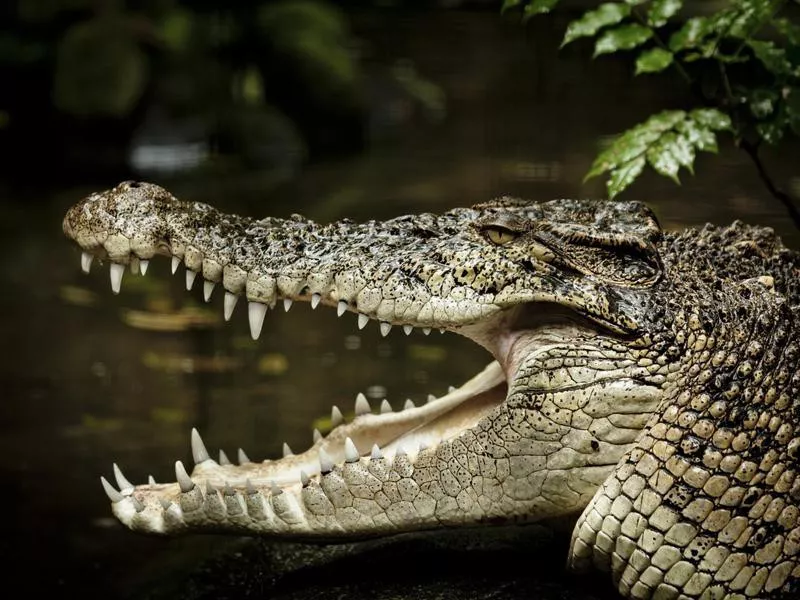
35007 / Getty Images
Humans Killed Per Year: 1,000
Where They Can Be Found: Australia, Asia, Africa and the Americas
Notable Features: A long body with thick scales and bony plates
What Makes Them So Dangerous
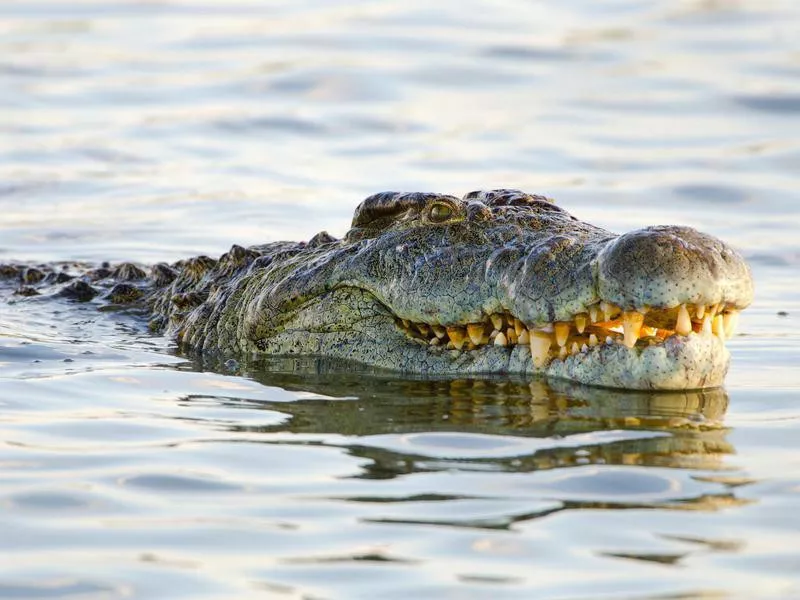
BirdImages / Getty Images
Crocodiles look as vicious as they are. These dinosaur-like reptiles are the eighth-deadliest animal in the world, killing about 1,000 humans each year. Of the 27 crocodile species, seven are extremely dangerous to humans.
Often confused with alligators, crocodiles are native to tropical areas of Australia, Africa, Asia and the Americas, but most human deaths occur in remote regions of Africa. The Nile Crocodile takes the crown for being the most dangerous, as it’s responsible for more than 300 fatal attacks on people each year.
7. Ascaris Roundworm
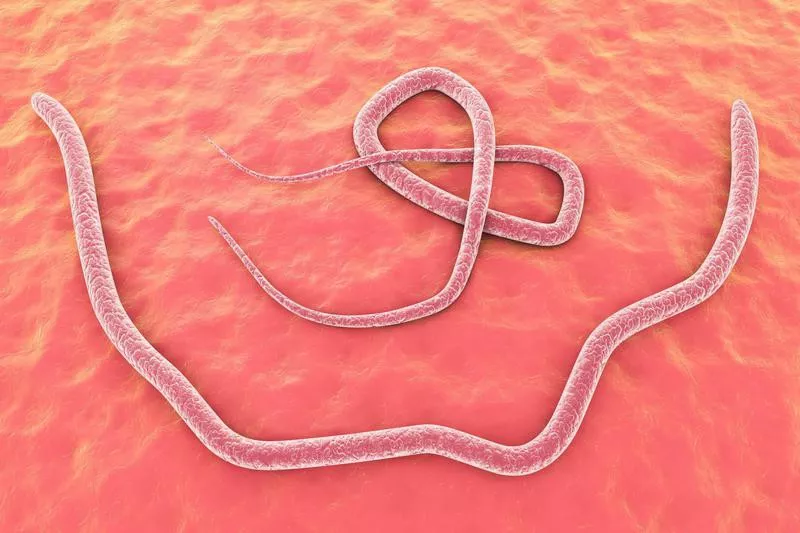
Dr_Microbe / Getty Images
Humans Killed Per Year: 2,500
Where They Can Be Found: Worldwide, particularly in warm, humid climates
Notable Features: Looks like a noodle and is about 12 inches in length
What Makes Them So Dangerous
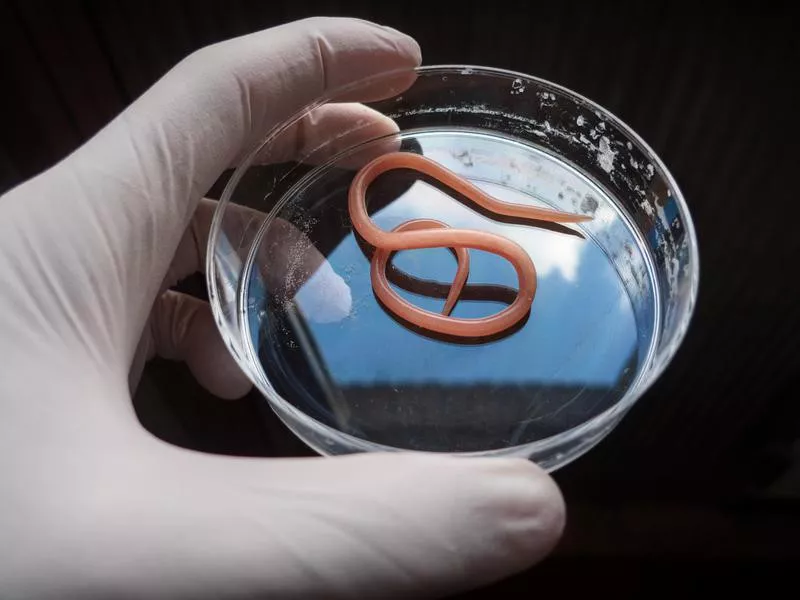
piola666 / Getty Images
Ascaris roundworms are parasitic worms that cause an infection of the small intestine. Humans can get infected with roundworms by ingesting infective eggs. Infection happens when contaminated hands are put in the mouth or by consuming raw produce that has not been washed, cooked or peeled.
Deaths from Ascaris roundworm are more common in areas that have ineffective sewage disposal systems.
6. Tsetse Fly
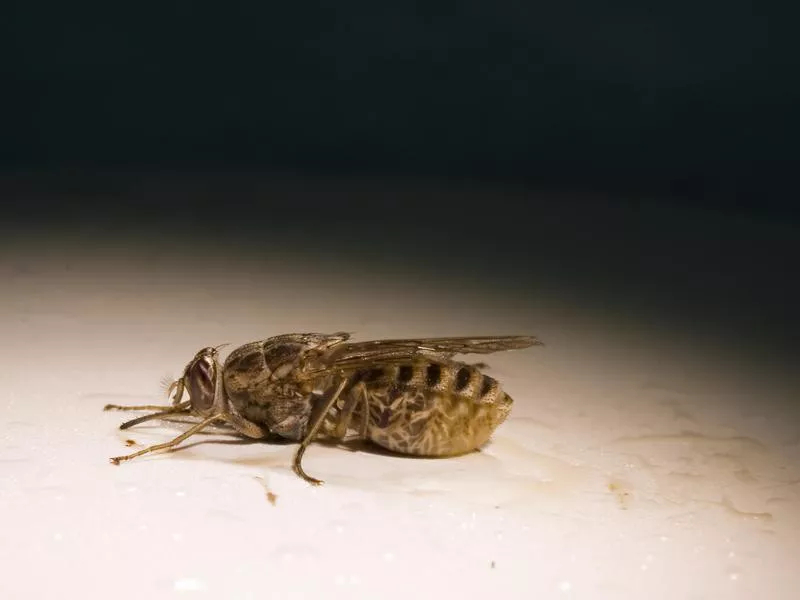
Attardog / Getty Images
Humans Killed Per Year: 10,000
Where They Can Be Found: Rural parts of Africa
Notable Features: Typical fly features with a yellowish-brown coloring
What Makes Them So Dangerous
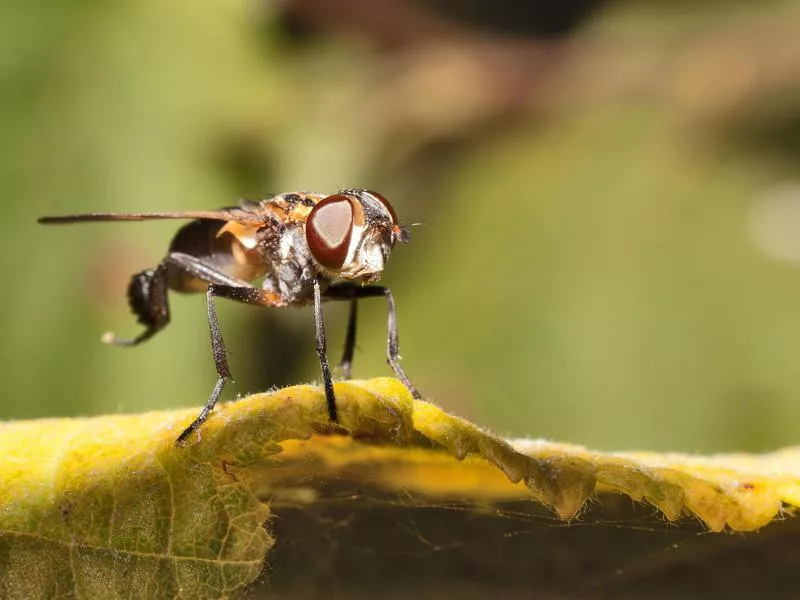
Cristian Storto Fotografia / Getty Images
A bite from a tsetse fly (pronounced set-si fly) is, to put it simply, unpleasant. The fly saws into your skin, transmits a disease called African trypanosomiasis (or sleeping sickness) and continues on its way.
Symptoms begin with a fever and headache and continue until the infected person becomes increasingly tired and eventually dies.
5. Assassin Bug
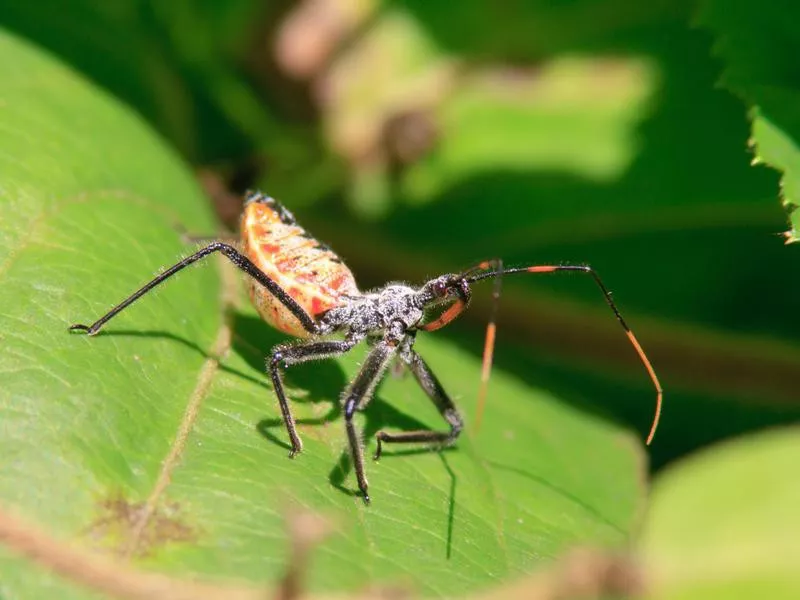
erniedecker / Getty Images
Humans Killed Per Year: About 10,000 to 12,000
Where They Can Be Found: North America, South America, Europe, Asia and Africa
Notable Features: A flat body with red and orange markings
What Makes Them So Dangerous
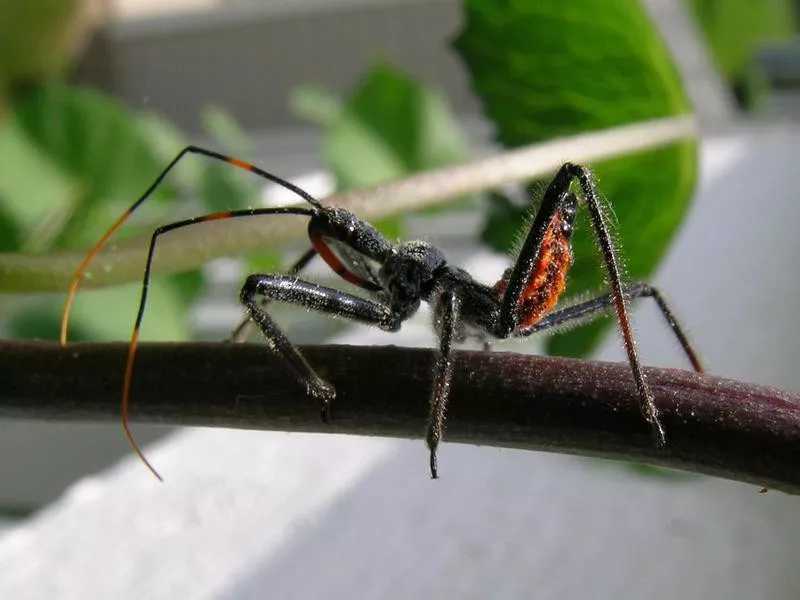
lpkoe / Getty Images
As the name implies, an assassin bug kills. It bites your skin, sucks your blood and transmits a disease called Chagas disease, which causes infection and inflammation of human tissues.
The assassin bug is ruthless to other insects as well. After it sucks its prey dry, the bug attaches the entire corpse to its back and walks around with it as a protective shield. That’s some sinister stuff!
4. Freshwater Snail
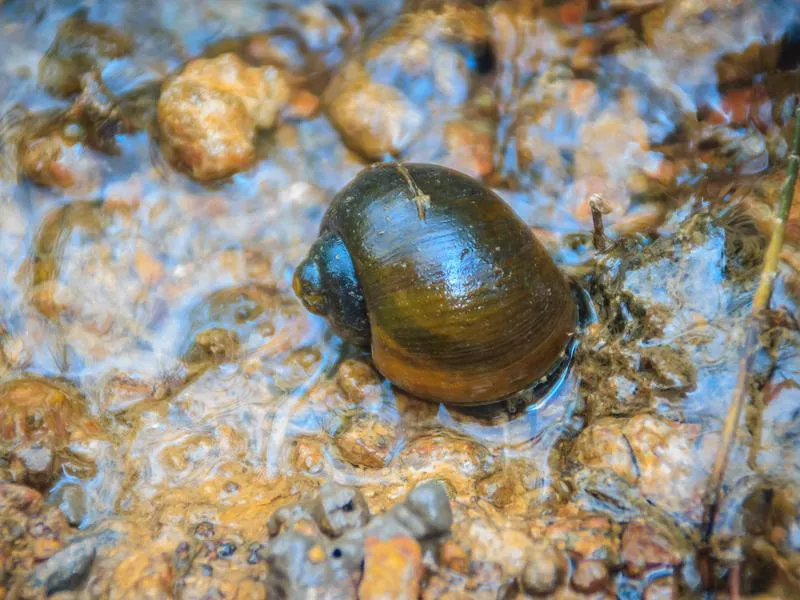
Kwhisky / Getty Images
Humans Killed Per Year: Between 10,000 and 20,000
Where They Can Be Found: Africa, Asia and South America
Notable Features: While you might not see the little snail, it’s the size of a quarter with a pinkish brown shell.
What Makes Them So Dangerous
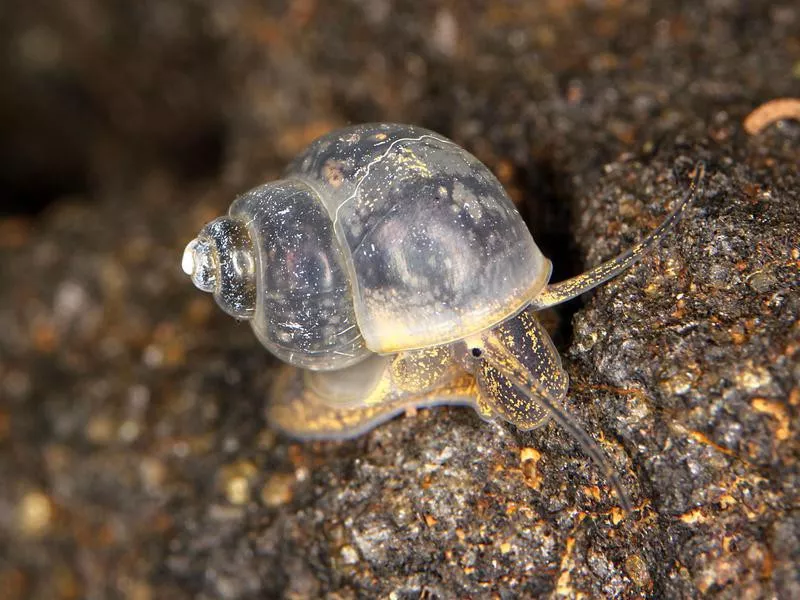
Heather Broccard-Bell / Getty Images
Death by snail is no way to die. No, they won’t catch you or touch you, but they are responsible for transmitting Schistosomiasis, a disease that infects the urinary tract and intestines.
The disease spreads by contact with freshwater that’s been contaminated with parasites released by the freshwater snails. The condition is most common in developing countries where people use unclean water for daily living.
3. Dog
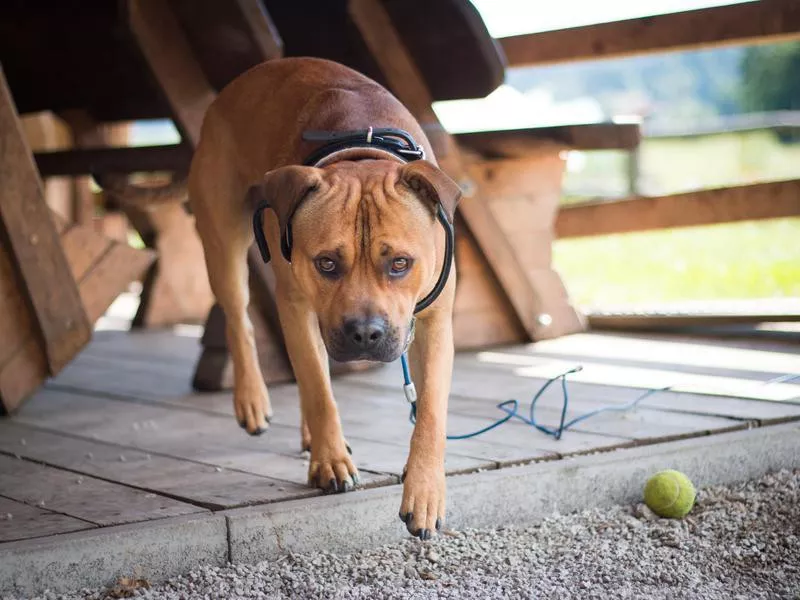
sestovic / Getty Images
Humans Killed Per Year: About 25,000 to 30,000
Where They Can Be Found: Worldwide
Notable Features: Dogs with rabies are usually foaming at the mouth.
What Makes Them So Dangerous
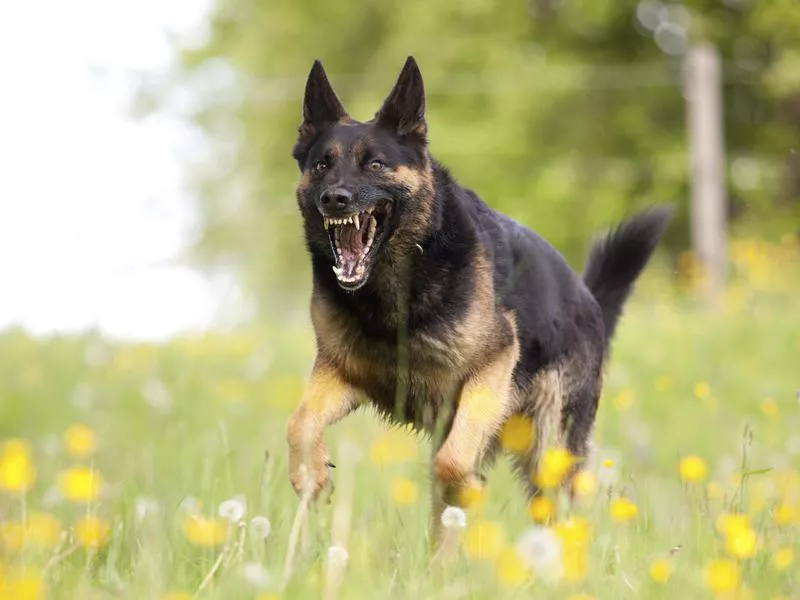
anjajuli / Getty Images
Think twice about cuddling with Spike, as he’s the third-deadliest animal in the world. Dogs infected with rabies are the ones who generally kill humans.
The World Health Organization reports that dogs contribute to 99 percent of all rabies transmissions to humans. A vaccine prevents rabies, yet most of the deaths happen in rural areas of Asia, Africa or South America, where the vaccine is not always accessible.
2. Snake
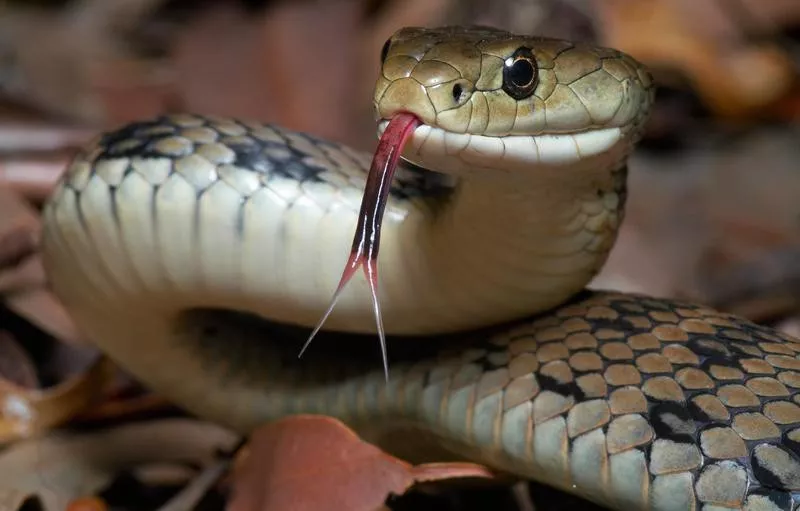
Byronsdad / Getty Images
Humans Killed Per Year: Different sources report anywhere from 25,000 to 100,000
Where They Can Be Found: Every continent except Antarctica
Notable Features: Each species has different features that mark them as poisonous, such as color patterns, head shape, rattle and pupil shape.
What Makes Them So Dangerous
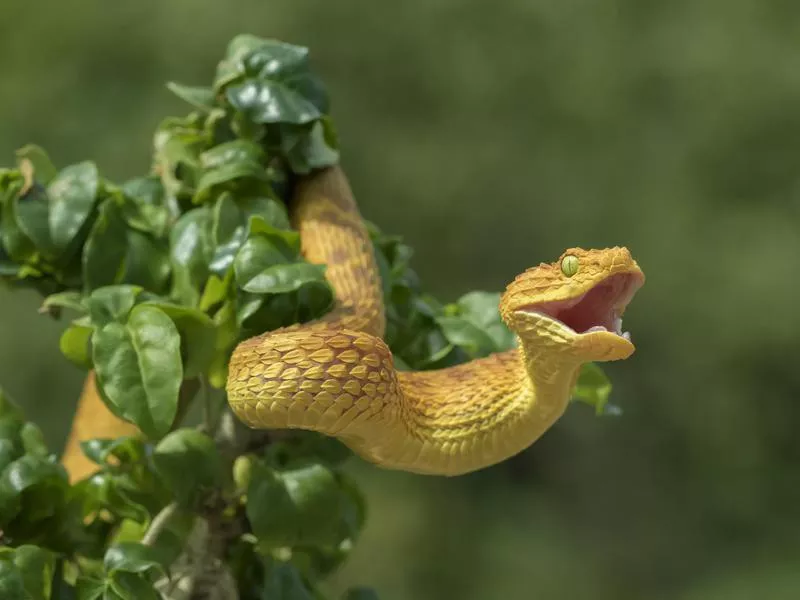
Mark Kostich / Getty Images
People either love snakes or hate them. There’s no in-between. Snakes kill about 100,000 humans every year, and they attack in a variety of ways. According to the World Health Organization (WHO), 600 of the 3,000 species of snakes are venomous.
Some of the most dangerous snakes live alongside people in areas where access to anti-venom and medical care is limited (such as India). Other snakes, such as pythons or anacondas, will simply squeeze and crush you to death. Oh, and all the cobra has to do is spit venom on your face to kill you.
1. Mosquito
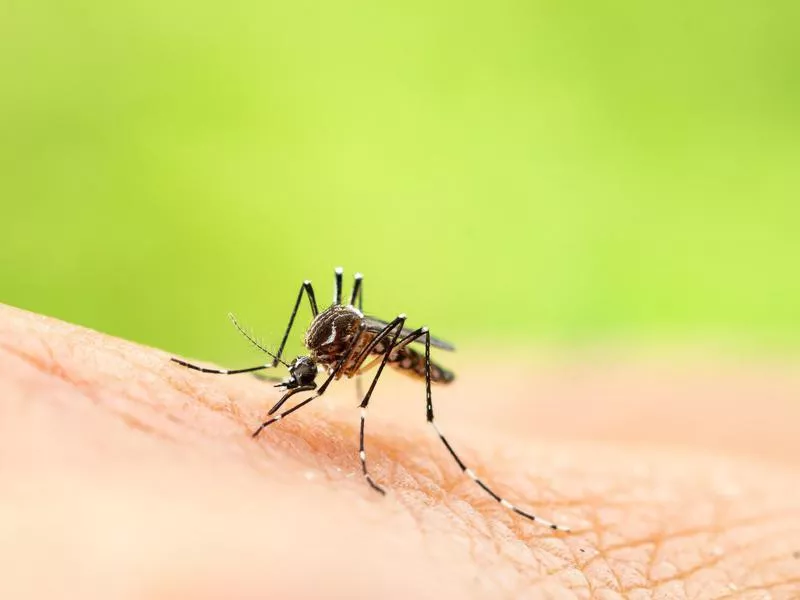
frank600 / Getty Images
Humans Killed Per Year: Different sources report anywhere from 725,000 to 1 million
Where They Can Be Found: Any environment, except for extremely cold weather
Notable Features: Small insects with long bodies, legs and antennae
What Makes Them So Dangerous
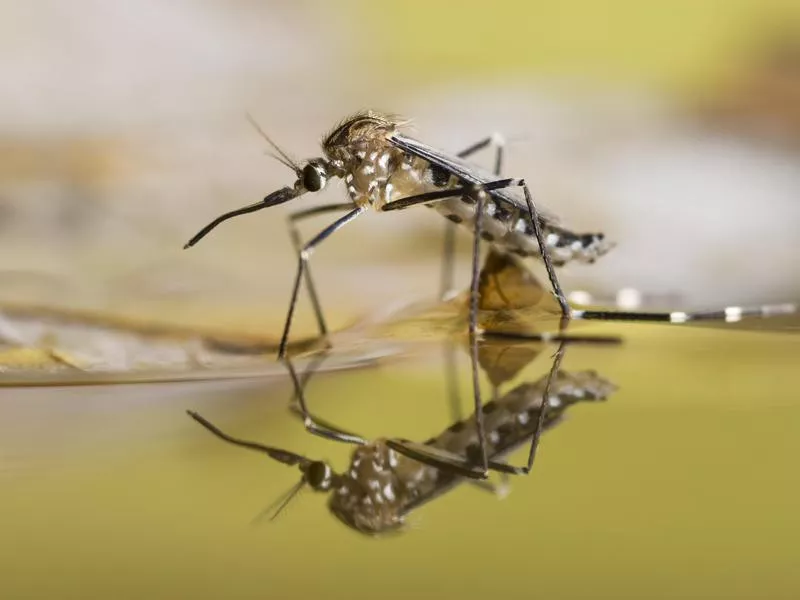
doug4537 / Getty Images
You may want to douse yourself in bug repellent after reading this. Mosquitos are responsible for more than 830,000 deaths per year. And, unfortunately, that makes sense. Mosquitos not only leave an itchy bite, but they are also carriers of illnesses and diseases, including Zika, malaria, dengue fever, Japanese encephalitis, West Nile and yellow fever — all of which are fatal.
But let’s lighten this up a little bit! The best thing you can do to avoid a mosquito bite? Wear the smelly mosquito repellent (DEET is the strongest) and decorate your home with citronella candles for a romantic, protective touch.
